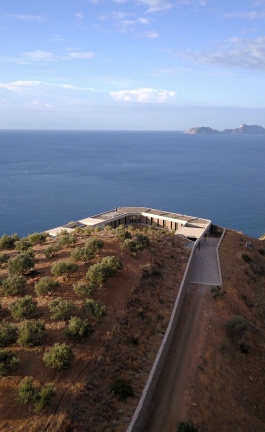Project Name
Bourse de Commerce – Pinault CollectionLocation
Architect
Tadao AndoCompleted
2021| Detailed Information | |||||
|---|---|---|---|---|---|
| Project Name | Bourse de Commerce – Pinault Collection | Posted in | Cultural, Art | Location |
2 Rue de Viarmes 75001 Paris
France |
| Architect | Tadao Ando | Completed | 2021 | ||
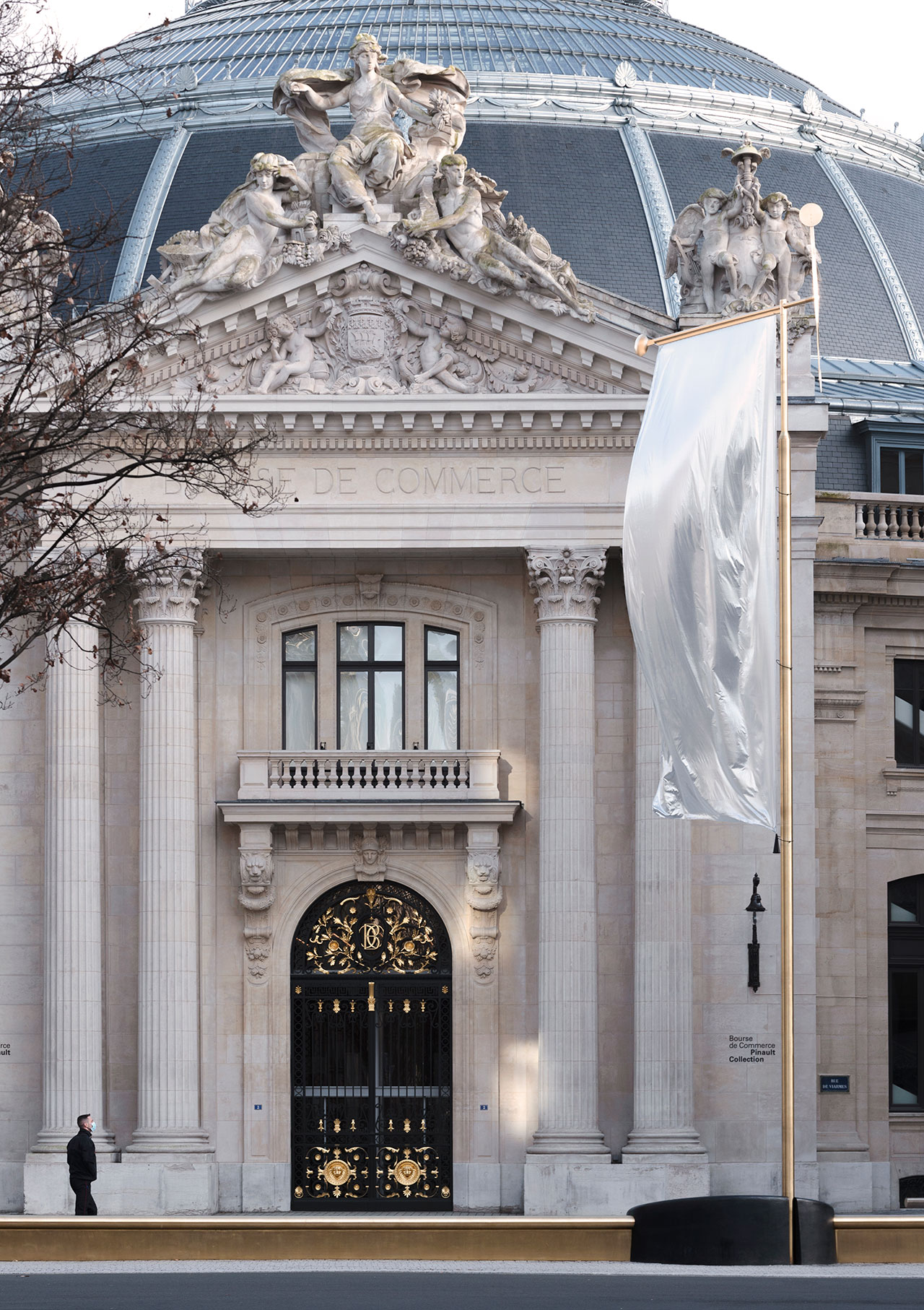
Street furniture by Studio Bouroullec © Studio Bouroullec. Courtesy Bourse de Commerce - Pinault Collection. Photo Studio Bouroullec.
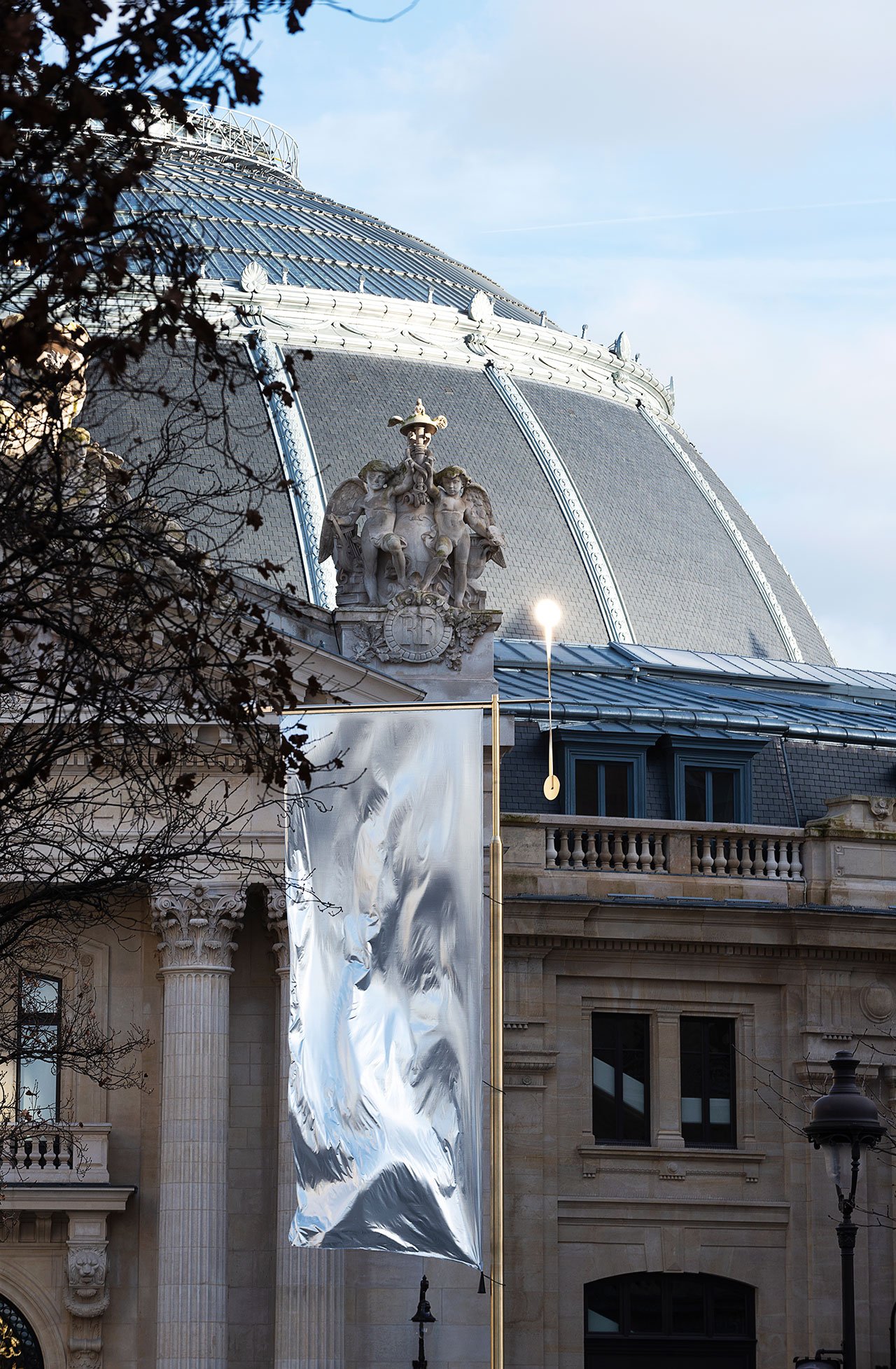
Street furniture by Studio Bouroullec © Studio Bouroullec. Courtesy Bourse de Commerce - Pinault Collection. Photo Studio Bouroullec.
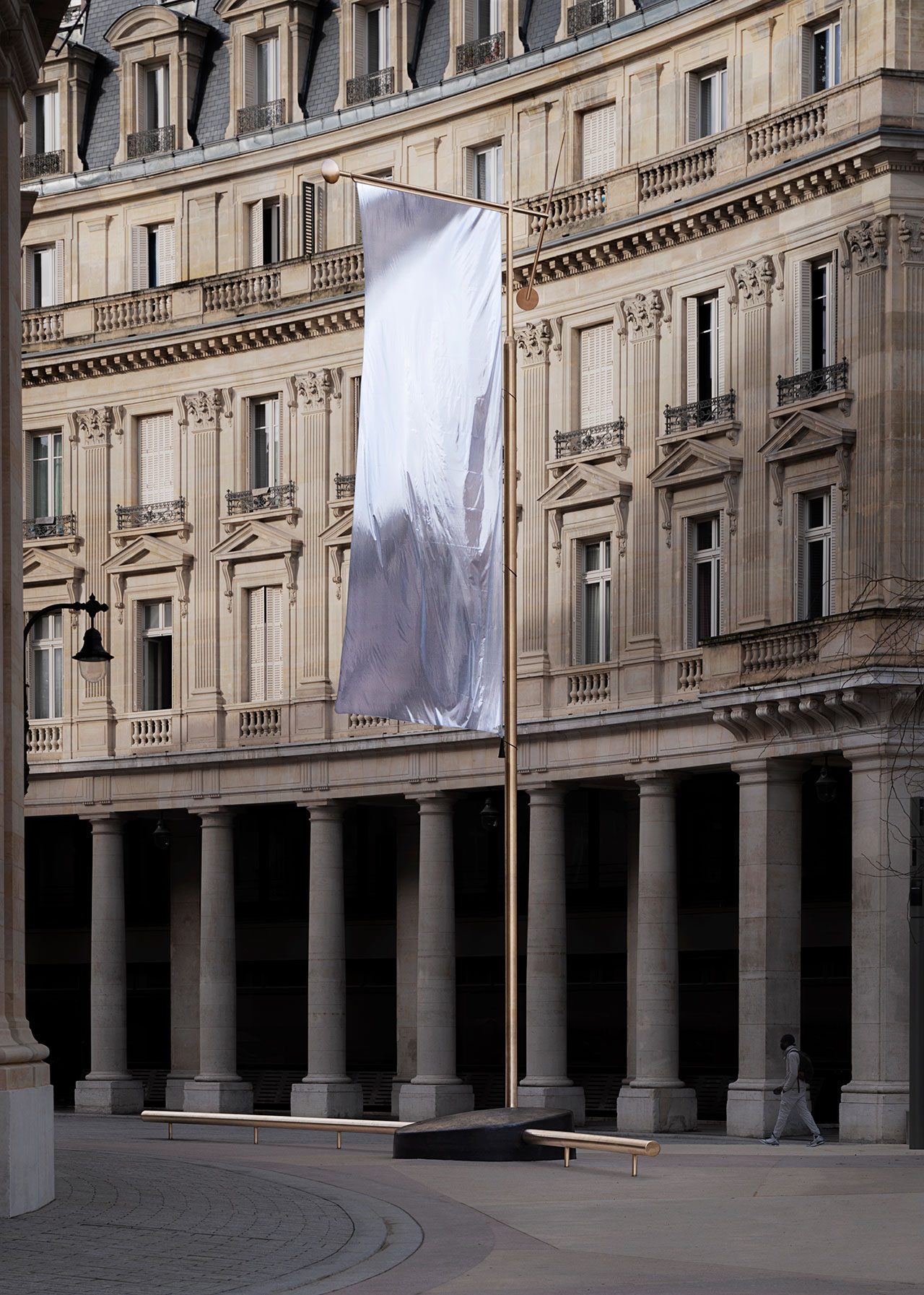
Street furniture by Studio Bouroullec © Studio Bouroullec. Courtesy Bourse de Commerce - Pinault Collection. Photo Studio Bouroullec.
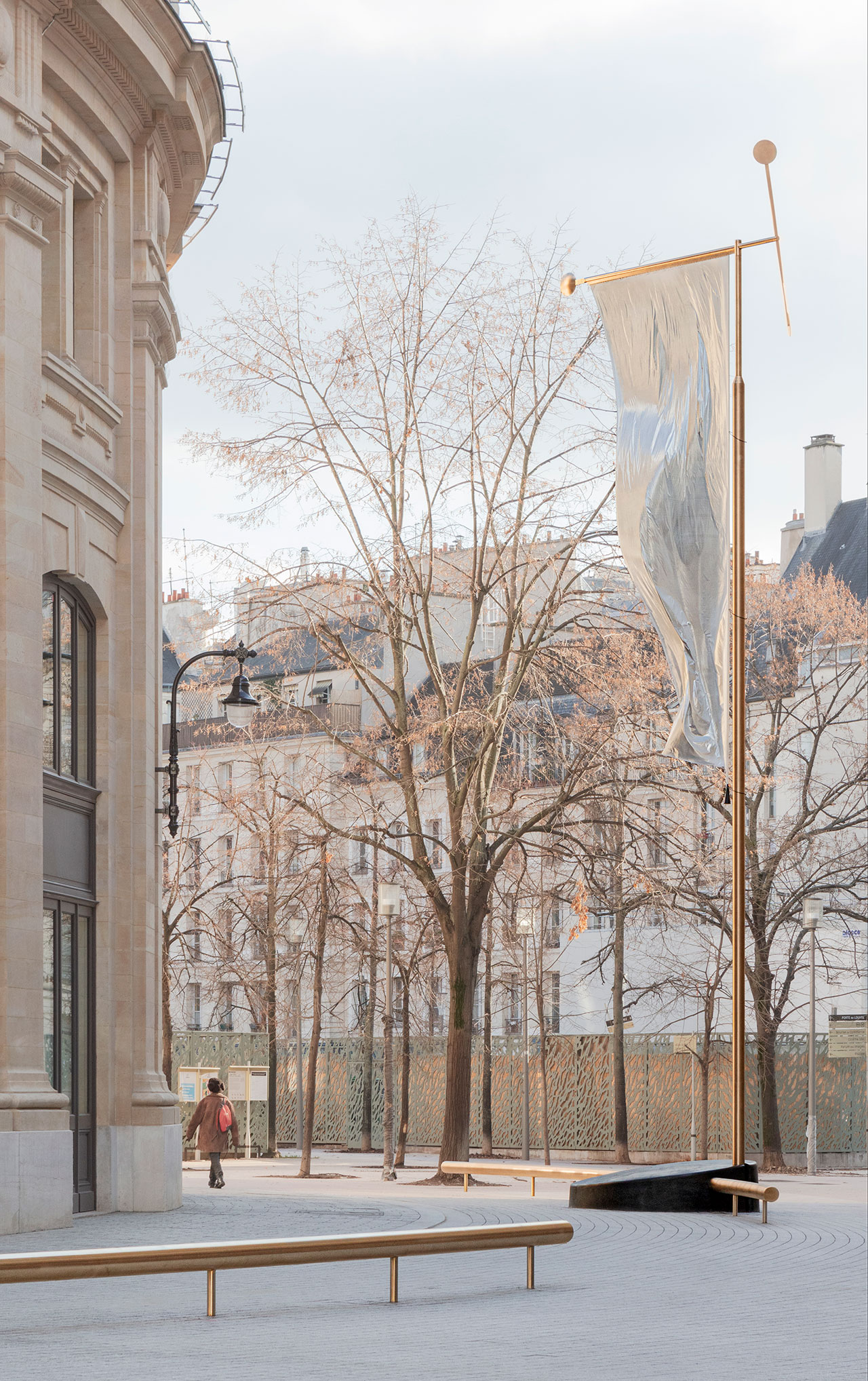
Street furniture by Studio Bouroullec © Studio Bouroullec. Courtesy Bourse de Commerce - Pinault Collection. Photo Studio Bouroullec.
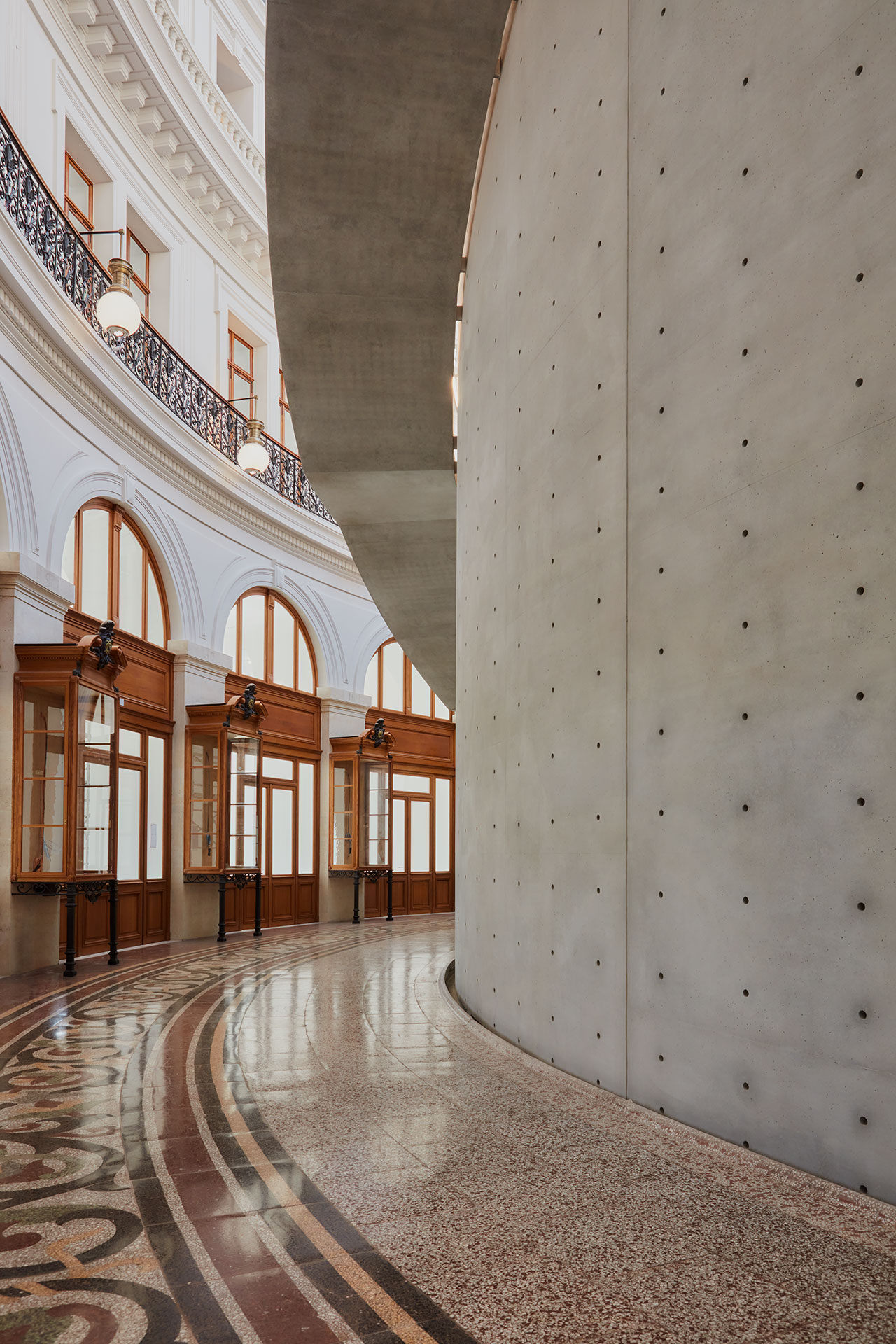
Bourse de Commerce — Pinault Collection © Tadao Ando Architect & Associates, Niney et Marca Architectes, Agence Pierre-Antoine Gatier. Photography by Maxime Tétard.
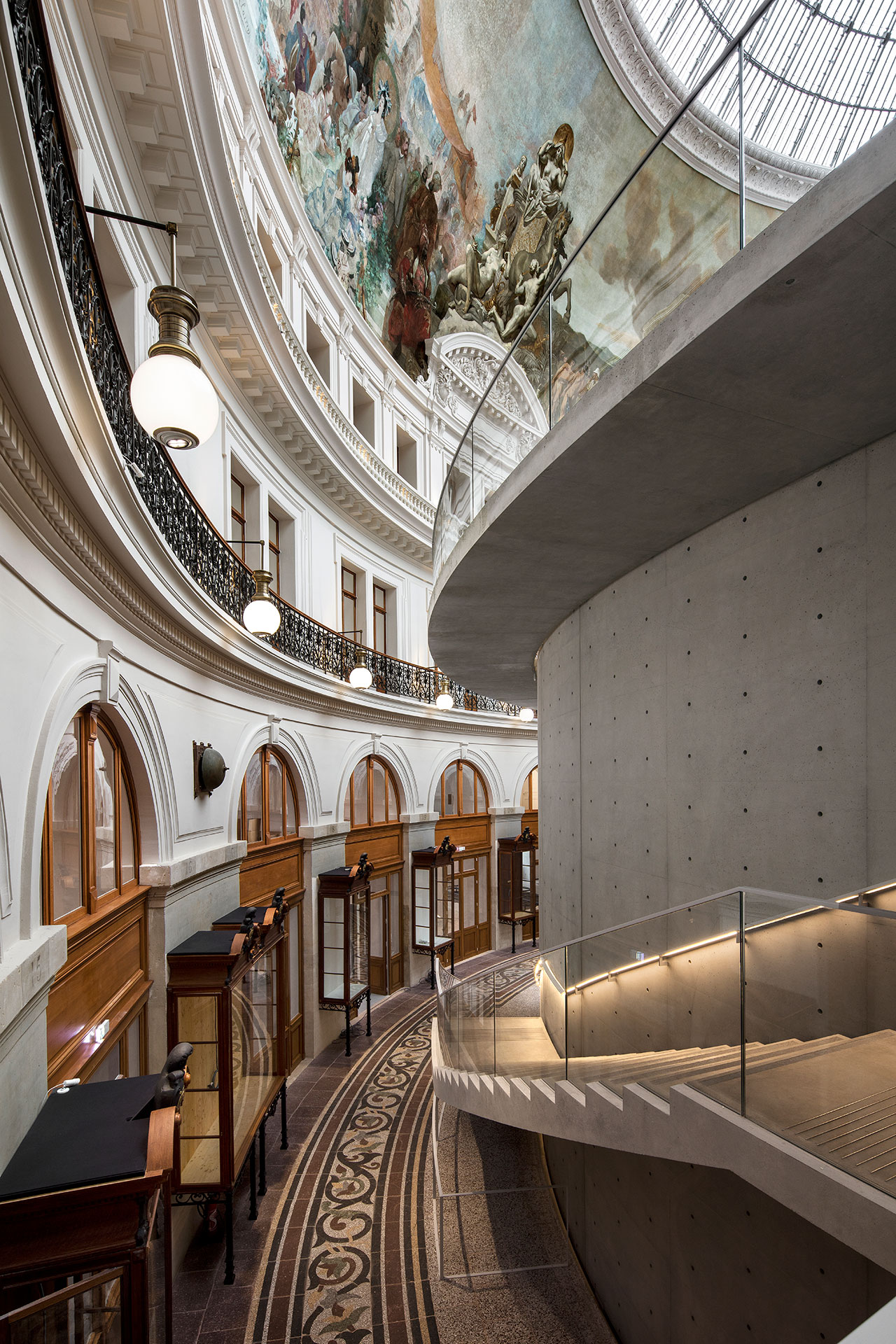
Bourse de Commerce — Pinault Collection © Tadao Ando Architect & Associates, Niney et Marca Architectes, Agence Pierre-Antoine Gatier. Photography by Patrick Tourneboeuf.
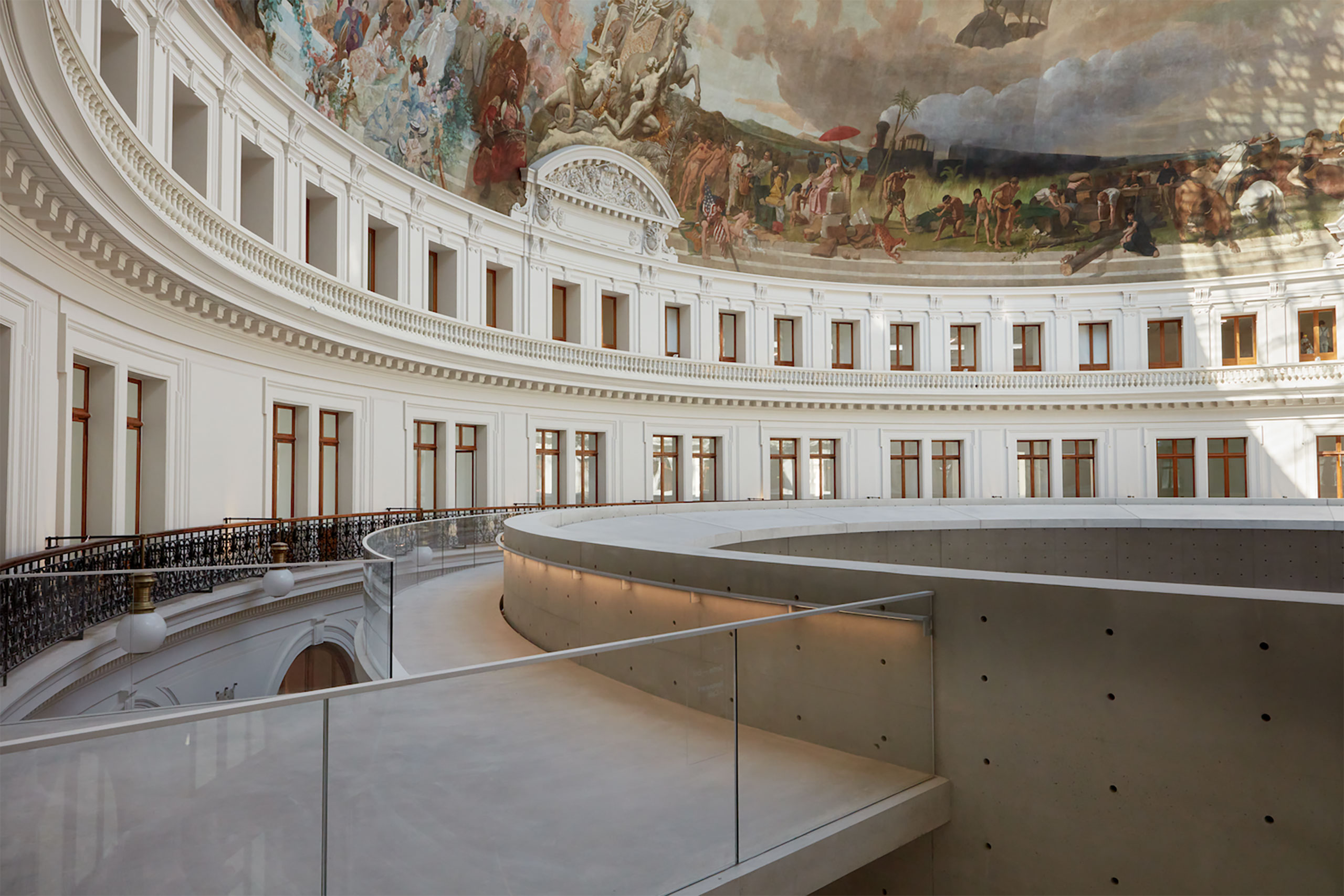
Bourse de Commerce — Pinault Collection © Tadao Ando Architect & Associates, Niney et Marca Architectes, Agence Pierre-Antoine Gatier. Photography by Maxime Tétard.
Pinault Collection’s Bourse de Commerce isn’t the first time that art, architecture and the world of luxury goods have joined forces in Paris in such a spectacular manner. Pinault’s ambitious endeavour follows in the footsteps of the Jean Nouvel-designed Fondation Cartier pour l’Art Contemporain which opened its doors in 1994 and the Frank Gehry-designed Louis Vuitton Foundation inaugurated 20 years later. But whereas those two projects established Cartier and LVMH’s cultural bona fides, the Bourse de Commerce is actually Pinault Collection’s third venue after the 18th century Palazzo Grassi and the 17th century Punta della Dogana in Venice which opened in 2006 and 2009, respectively. Apart from hosting sections of the 10,000-artwork-strong Pinault Collection, what unites all three historic premises are the masterful renovations by Tadao Ando whom Pinault has been collaborating with for the past twenty years.
Initially constructed as the Hôtel de Soissons for Catherine de’ Medici in the 16th century, it was rebuilt in the 18th century in the form of a three-story circular volume topped with an enormous glass cupola to serve as a wheat market before becoming at the end of the 19th century a commodities exchange, at which time it was extensively renovated by architect Henry Blondel, and later the city’s stock exchange. In collaboration with Paris-based NeM Architectes, Tadao Ando has meticulously restored the building’s stately architecture, including the steel and glass dome, which is classified as a historical monument, transforming the edifice into a multi-use venue that includes seven galleries, a 284-seat auditorium, a black-box theatre for video installations and experimental performances, and a top-floor café-restaurant, La halle aux grains helmed by father and son Chefs Michel & Sébastien Bras.
Add in French designers Ronan and Erwan Bouroullec’s bespoke minimalist furnishings, which range from street furniture around the building, to benches and chairs in the interior created in collaboration with Cassina and Artek, to light fittings manufactured by Flos Bespoke, including a monumental 17-metre-long chandelier, and you get an idea about the attention to detail that permeates the entire project.
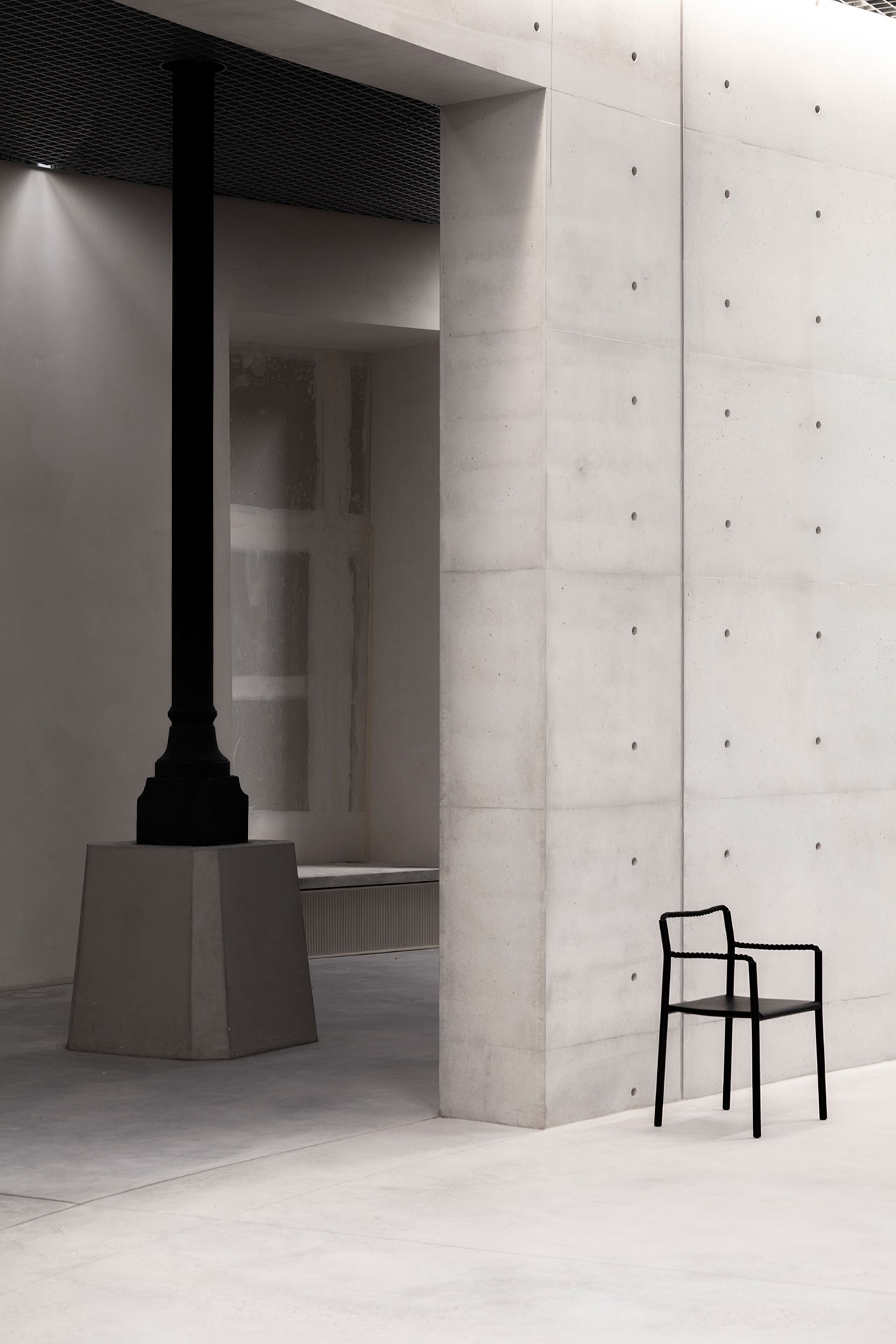
Ronan et Erwan Bouroullec, Chaise corde, 2020. © Studio Bouroullec
© Tadao Ando Architect & Associates, NeM / Niney et Marca
Courtesy Bourse de Commerce - Pinault Collection
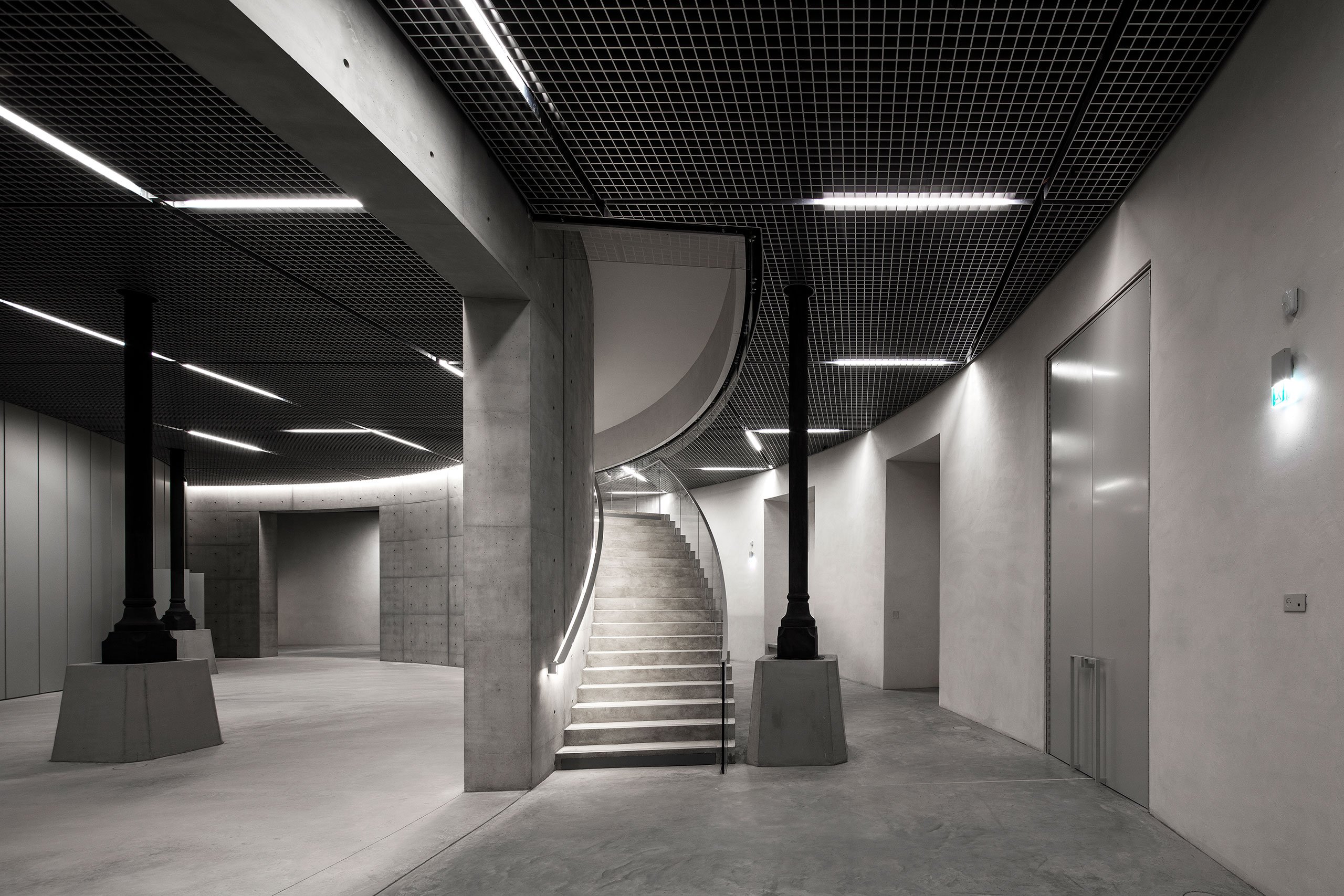
Bourse de Commerce - Pinault Collection © Tadao Ando Architect & Associates, Niney et Marca Architectes. Photo Patrick Tourneboeuf

Bourse de Commerce - Pinault Collection © Tadao Ando Architect & Associates, Niney et Marca Architectes. Photo Patrick Tourneboeuf
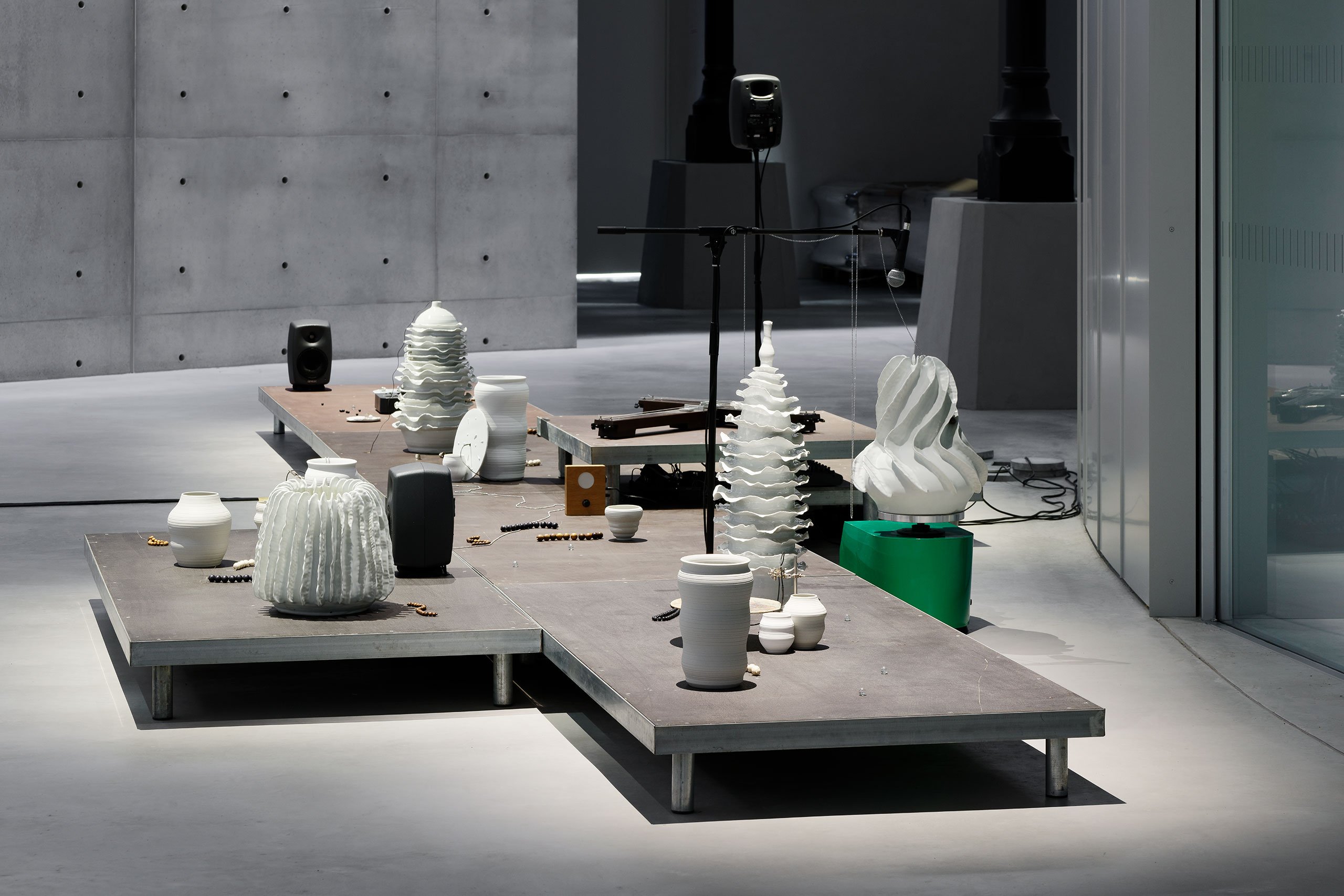
Tarek Atoui, The Ground, 2019 (détail). © Tarek Atoui. Exhibition views of Ouverture, Bourse de Commerce — Pinault Collection, Paris, 2021. Photo Aurélien Mole
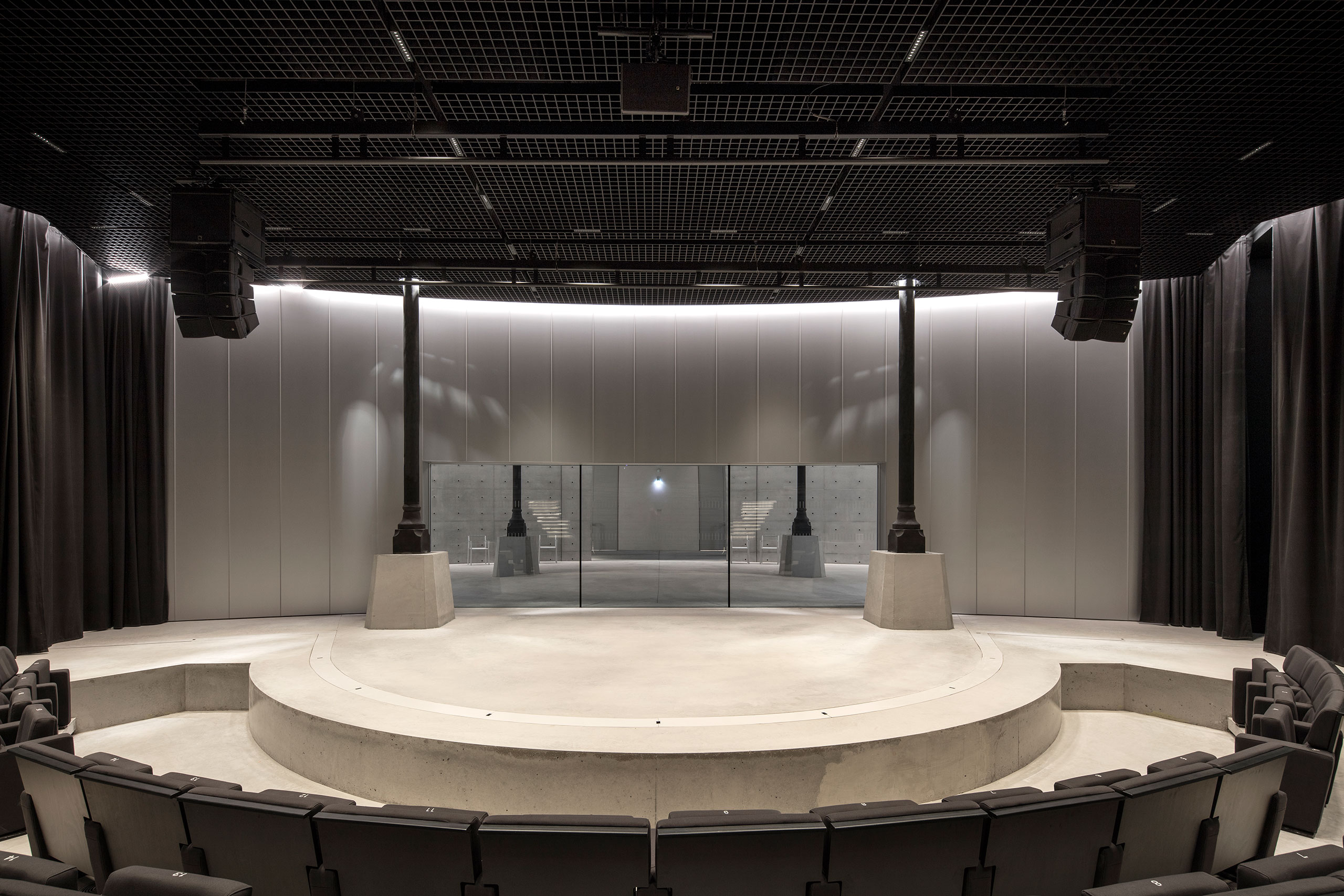
Bourse de Commerce - Pinault Collection © Tadao Ando Architect & Associates, Niney et Marca Architectes. Photo Patrick Tourneboeuf

Bourse de Commerce - Pinault Collection © Tadao Ando Architect & Associates, Niney et Marca Architectes. Photo Patrick Tourneboeuf
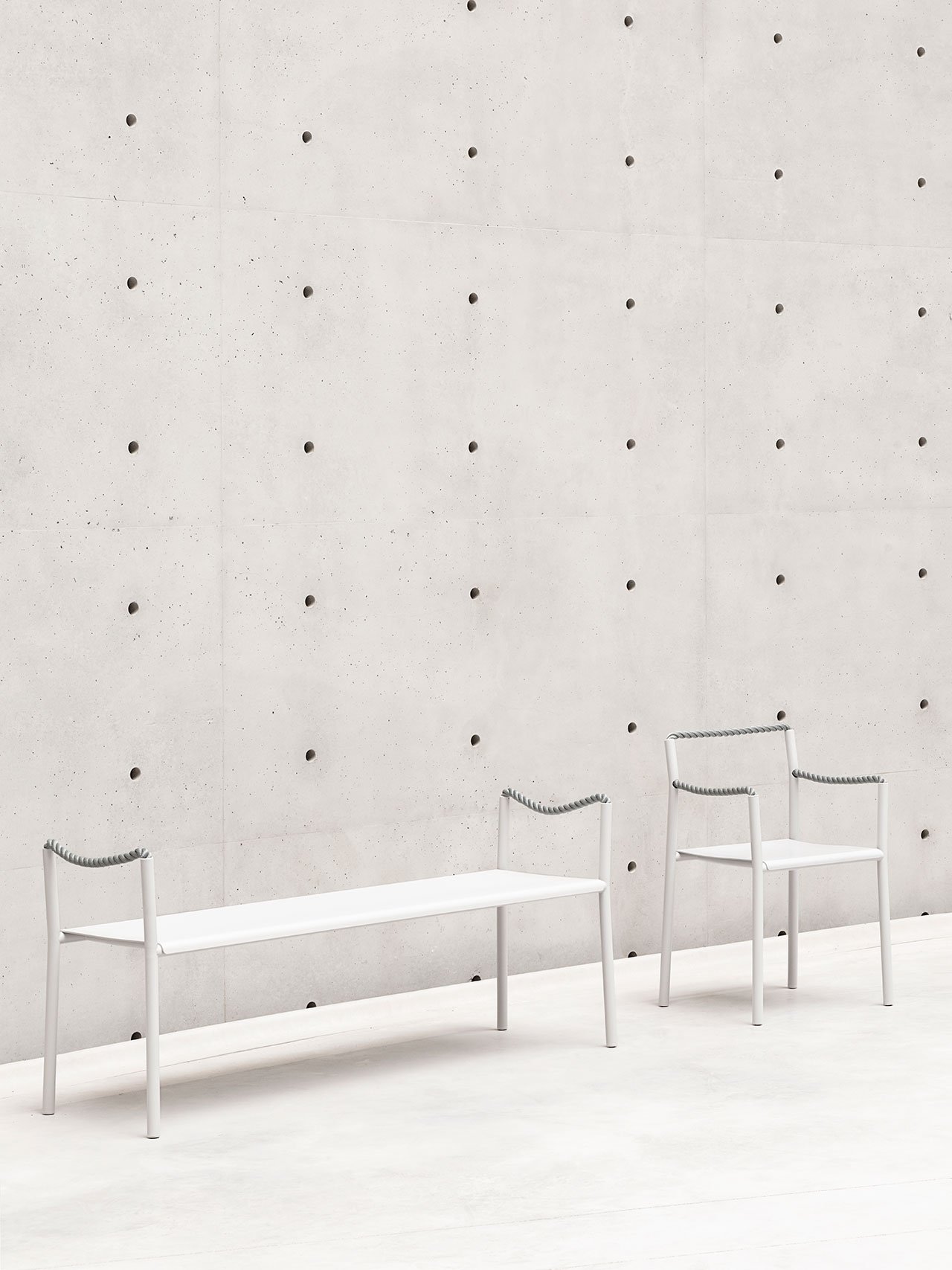
Ronan et Erwan Bouroullec, Chaise corde, 2020. © Studio Bouroullec
© Tadao Ando Architect & Associates, NeM / Niney et Marca
Courtesy Bourse de Commerce - Pinault Collection
Undoubtedly, Ando’s boldest architectural gesture is the 29-metre-wide, nine-metre-tall concrete cylinder that he has inserted within the rotunda. The concrete structure forms a round exhibition space whose minimalist aesthetic initiates a dialogue with the grandiose glass dome and monumental 360-degree mural hovering above. On the outside, a set of concrete staircases wrap around the cylindrical volume connect the ground floor with the upper levels. This includes a circular walkway on the top of the concrete structure from where visitors can more closely observe the 19th century mural of the cupola, and the basement where the concrete cylinder extends down to forming a ring-shaped foyer with an auditorium in the middle.
Standing in the middle of the rotunda as part of the museum’s inaugural exhibition, Swiss artist Urs Fischer’s group of deceptive sculptures sets the tone for the Collection’s thematic explorations and artistic sensibility. Based on one of his most emblematic artworks, “Untitled” (2011), the installation is comprised of nine wax sculptures centred on a wax replica of the 16th-century statue “The Abduction of the Sabine Women” by Giambologna, around which Fischer has placed a life-size effigy of Italian painter and Fischer’s friend Rudolf Stingel, a Monobloc garden chair (the most popular chair in the world), a standard office chair, a pair of economy class airplane seats, and four copies of chairs from the Musée du Quai Branly collection.
Conceived as a monument to impermanence, the wax sculptures were set alight at the museum’s opening and will burn for six months until there’s nothing left. More than a memento mori, Fischer’s work also makes a political statement: set underneath the dome’s restored 19th-century frescoes, whose iconography in celebration of France’s commercial reach is replete in demeaning stereotypes of a Eurocentric colonized world, the melting art and design icons offer a sobering rebuttal to the superiority of Western culture.
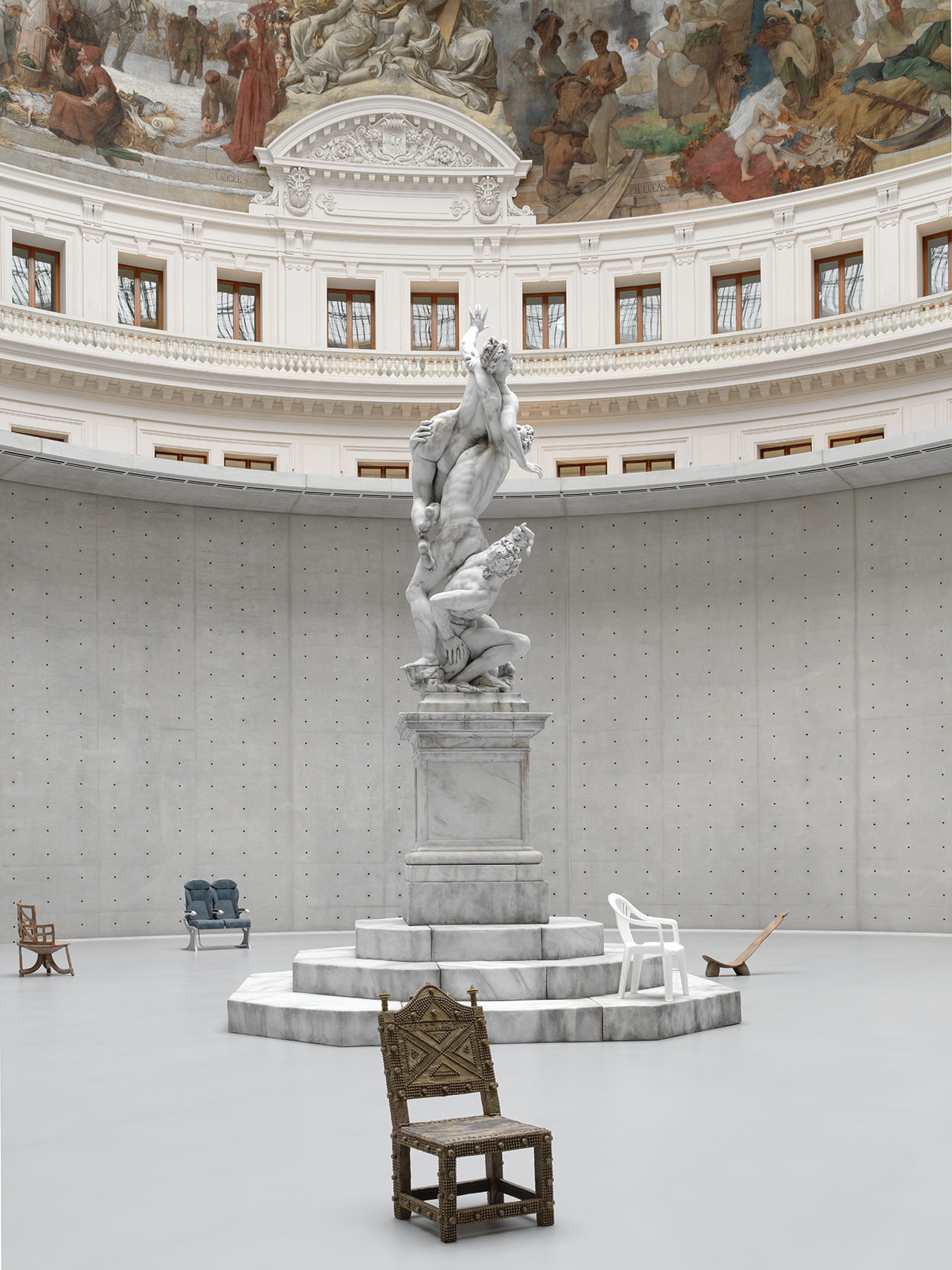
Urs Fischer, Untitled, 2011–20 (detail), © Urs Fischer. Exhibition view of Ouverture, Bourse de Commerce — Pinault Collection, Paris, 2021. Photo Stefan Altenburger.
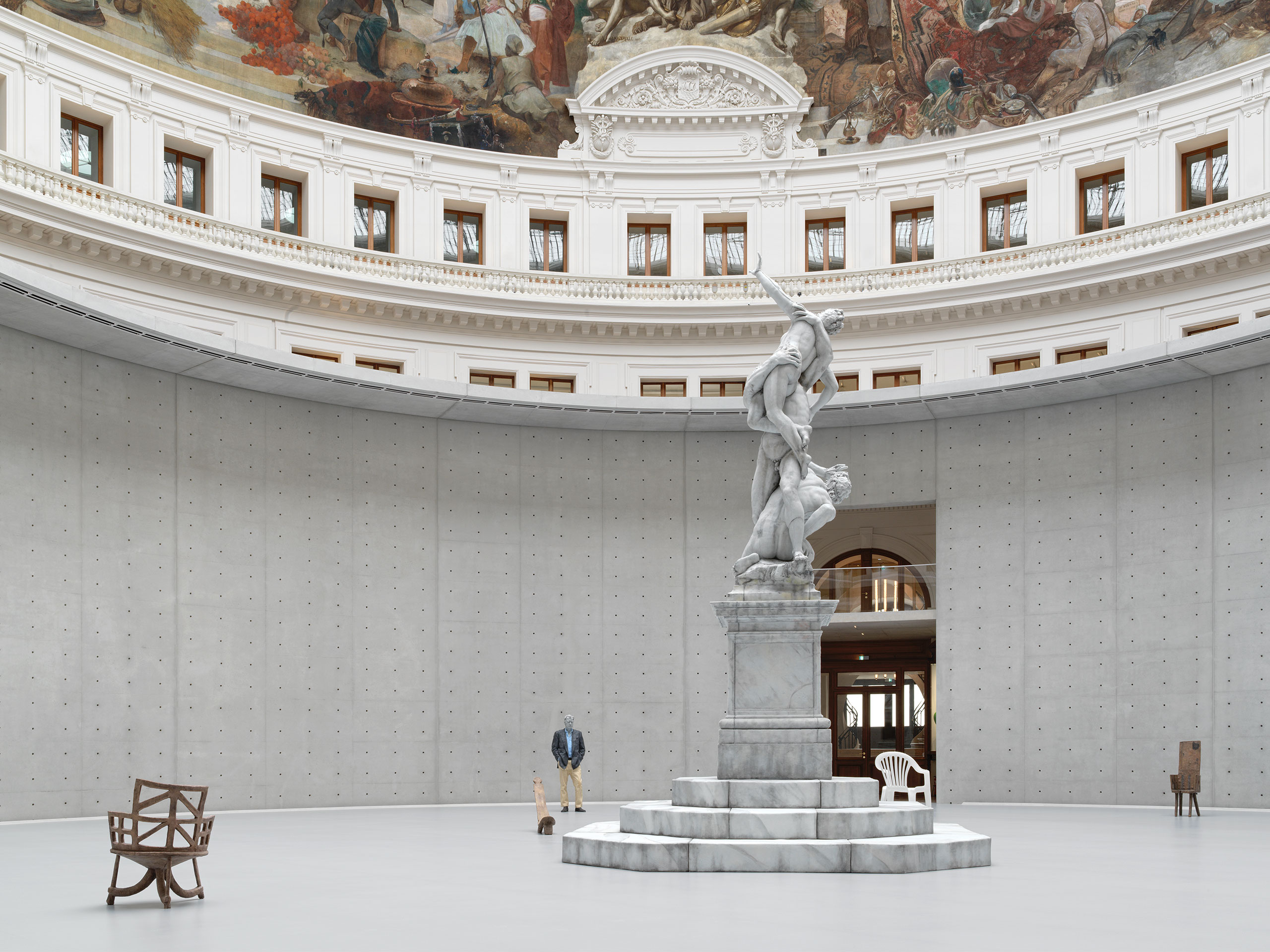
Urs Fischer, Untitled, 2011–20 (detail), © Urs Fischer. Exhibition view of Ouverture, Bourse de Commerce — Pinault Collection, Paris, 2021. Photo Stefan Altenburger.
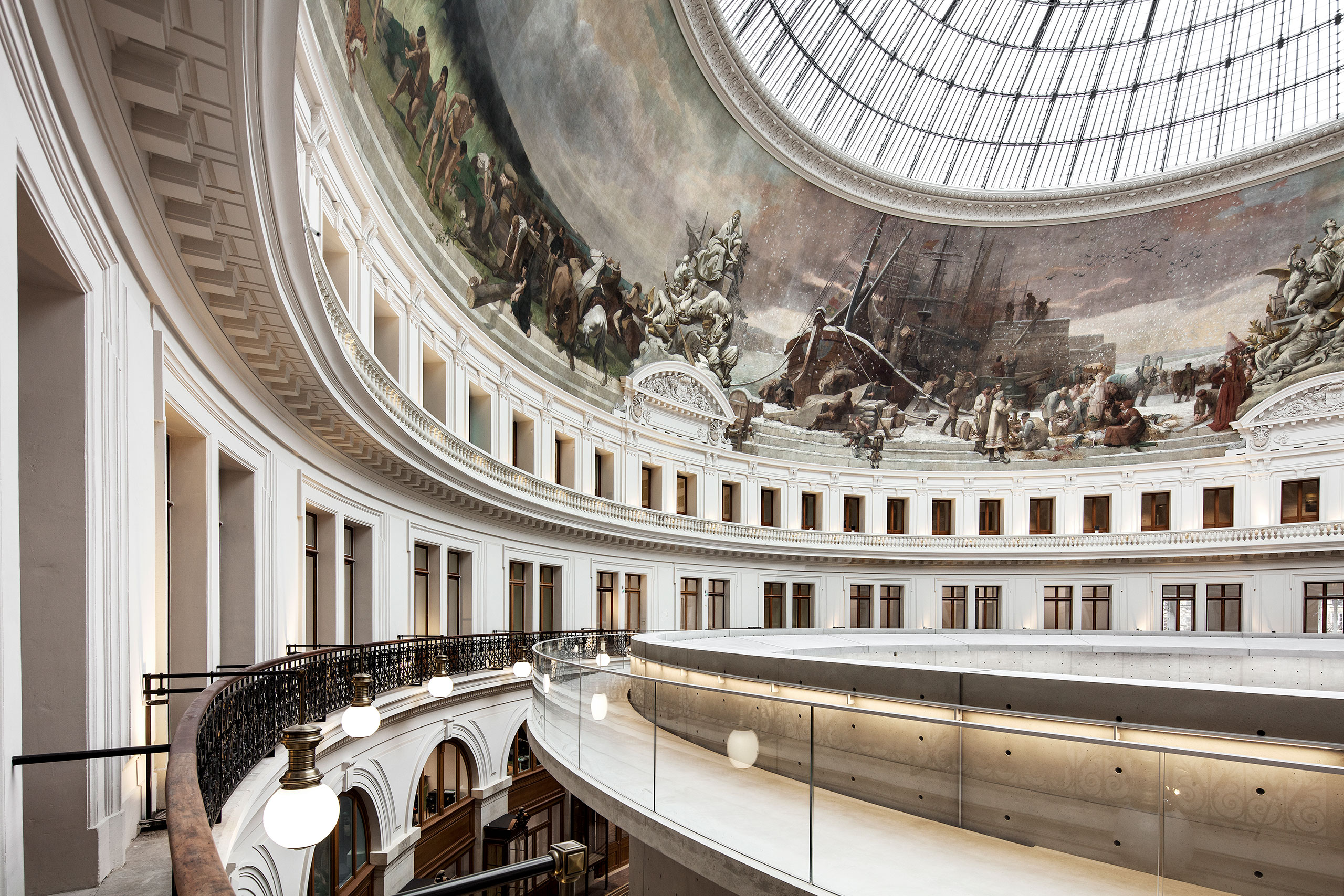
Bourse de Commerce — Pinault Collection © Tadao Ando Architect & Associates, Niney et Marca Architectes, Agence Pierre-Antoine Gatier. Photography by Patrick Tourneboeuf.
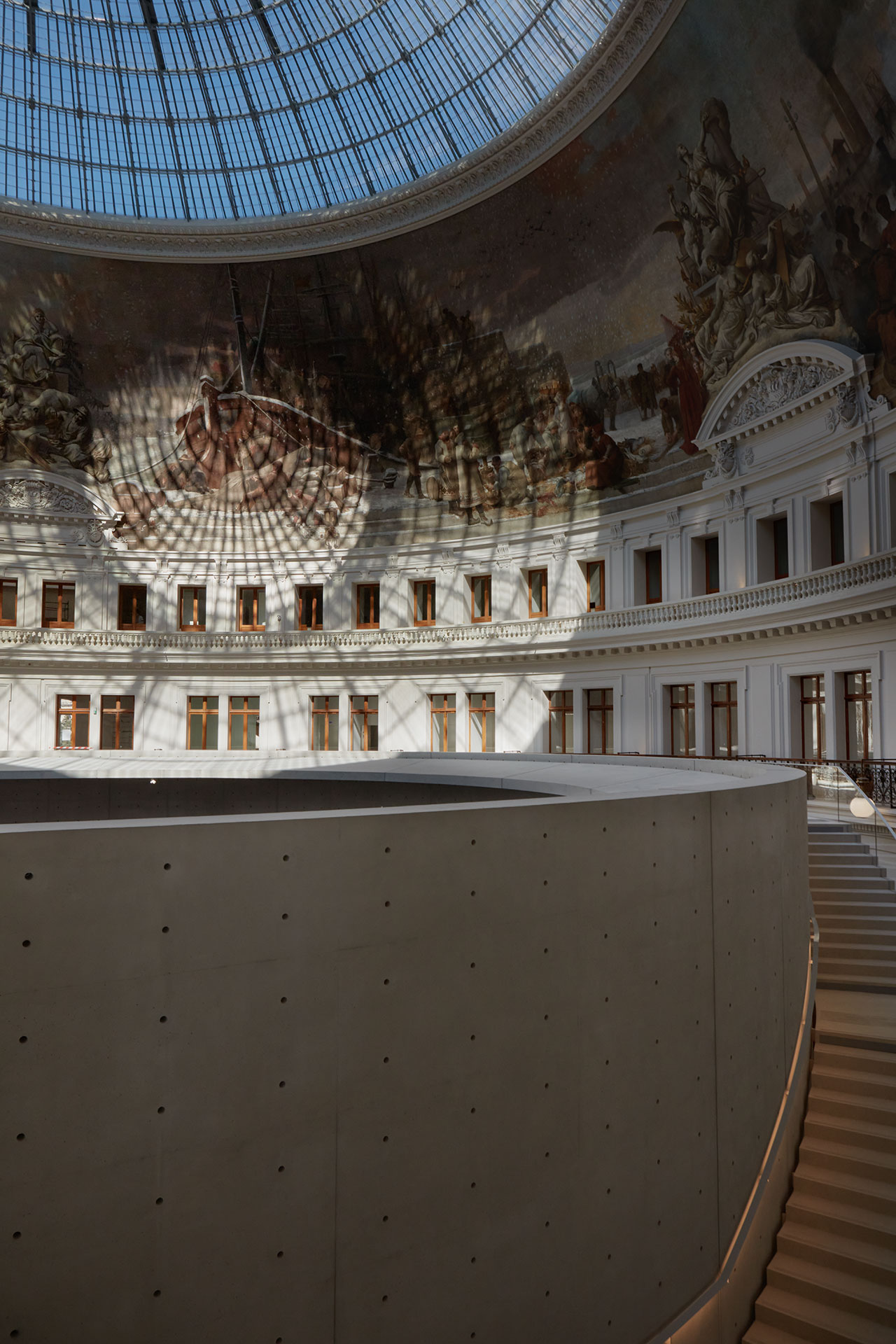
Bourse de Commerce — Pinault Collection © Tadao Ando Architect & Associates, Niney et Marca Architectes, Agence Pierre-Antoine Gatier. Photography by Maxime Tétard.
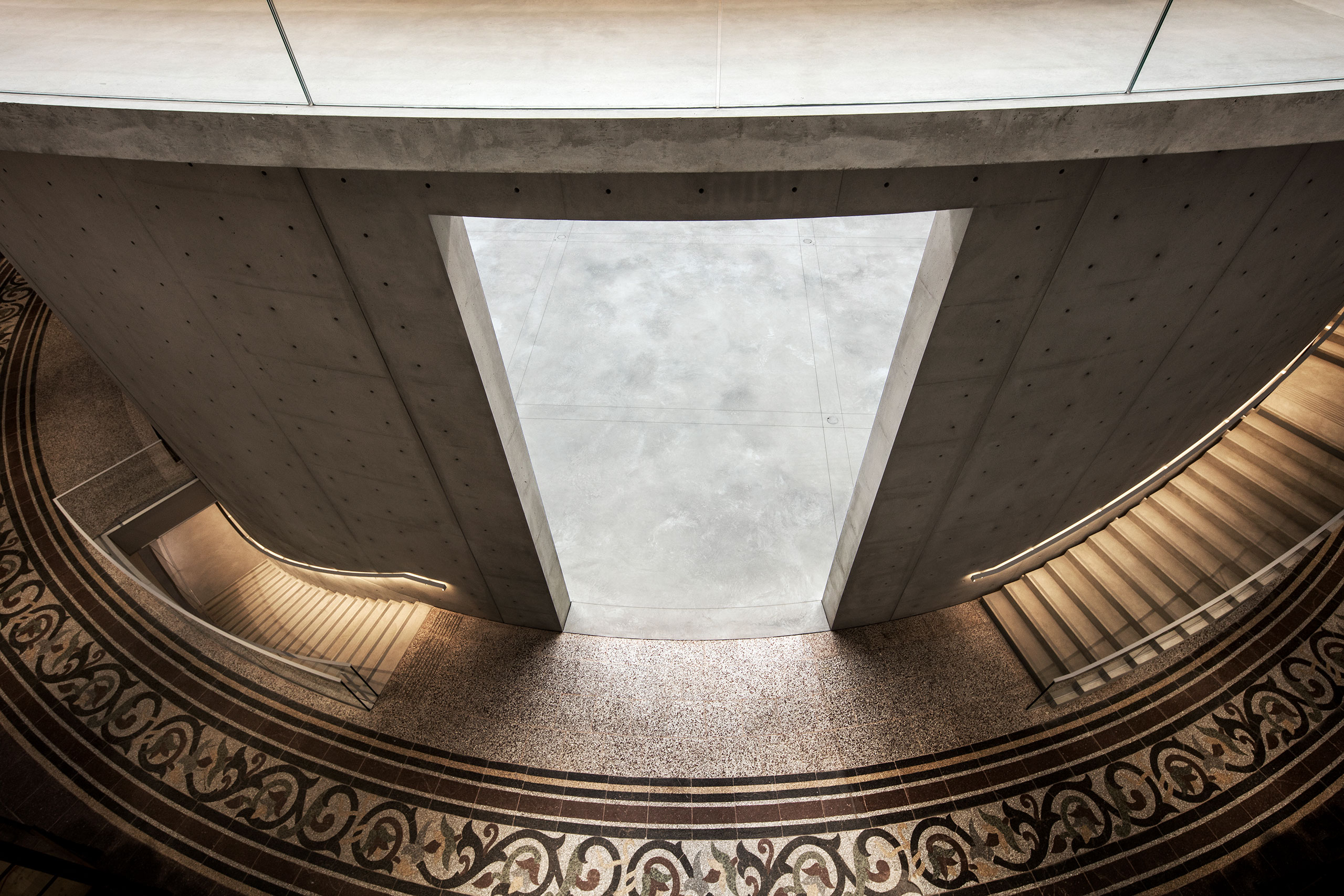
Bourse de Commerce — Pinault Collection © Tadao Ando Architect & Associates, Niney et Marca Architectes, Agence Pierre-Antoine Gatier. Photography by Patrick Tourneboeuf.
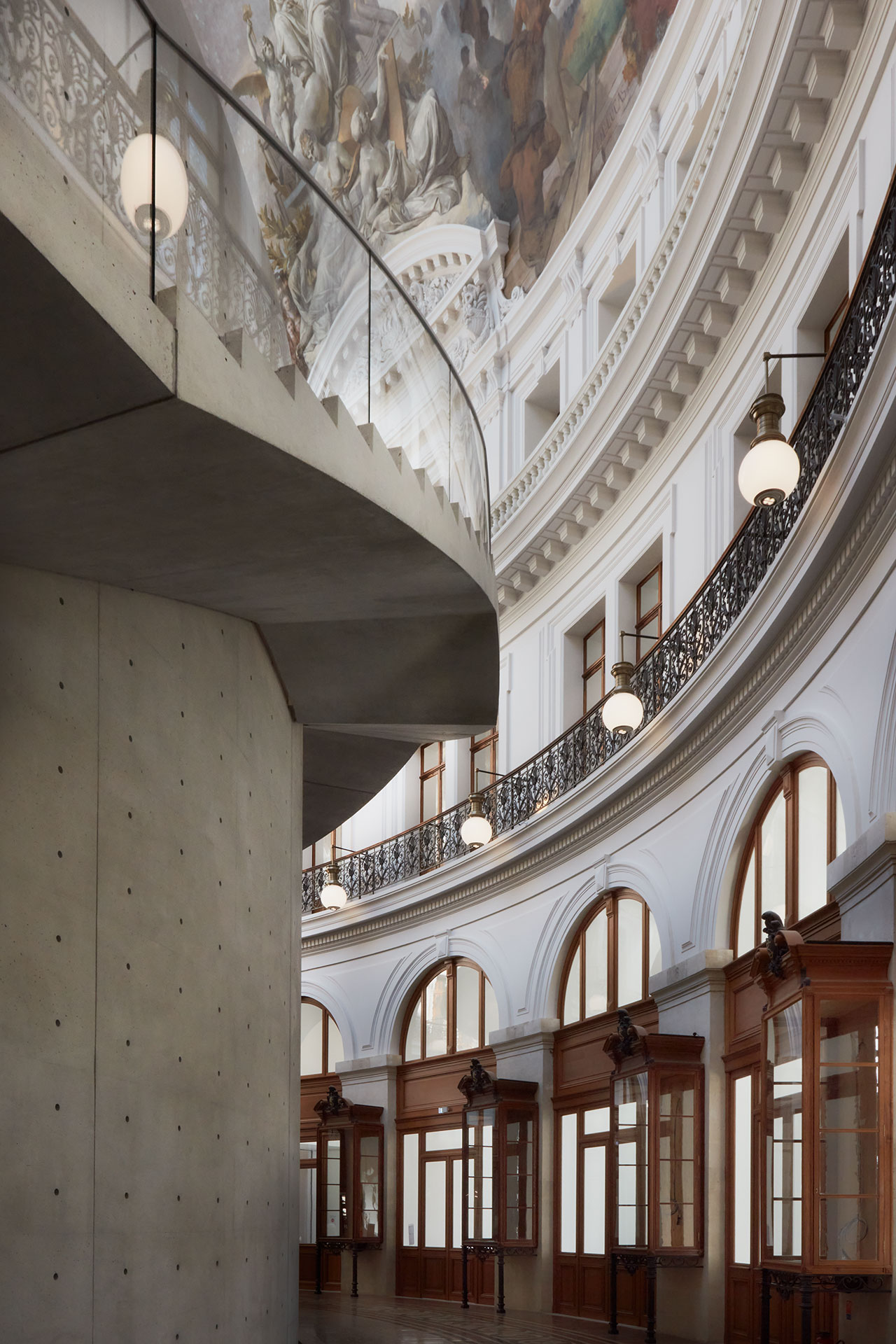
Bourse de Commerce — Pinault Collection © Tadao Ando Architect & Associates, Niney et Marca Architectes, Agence Pierre-Antoine Gatier. Photography by Maxime Tétard.
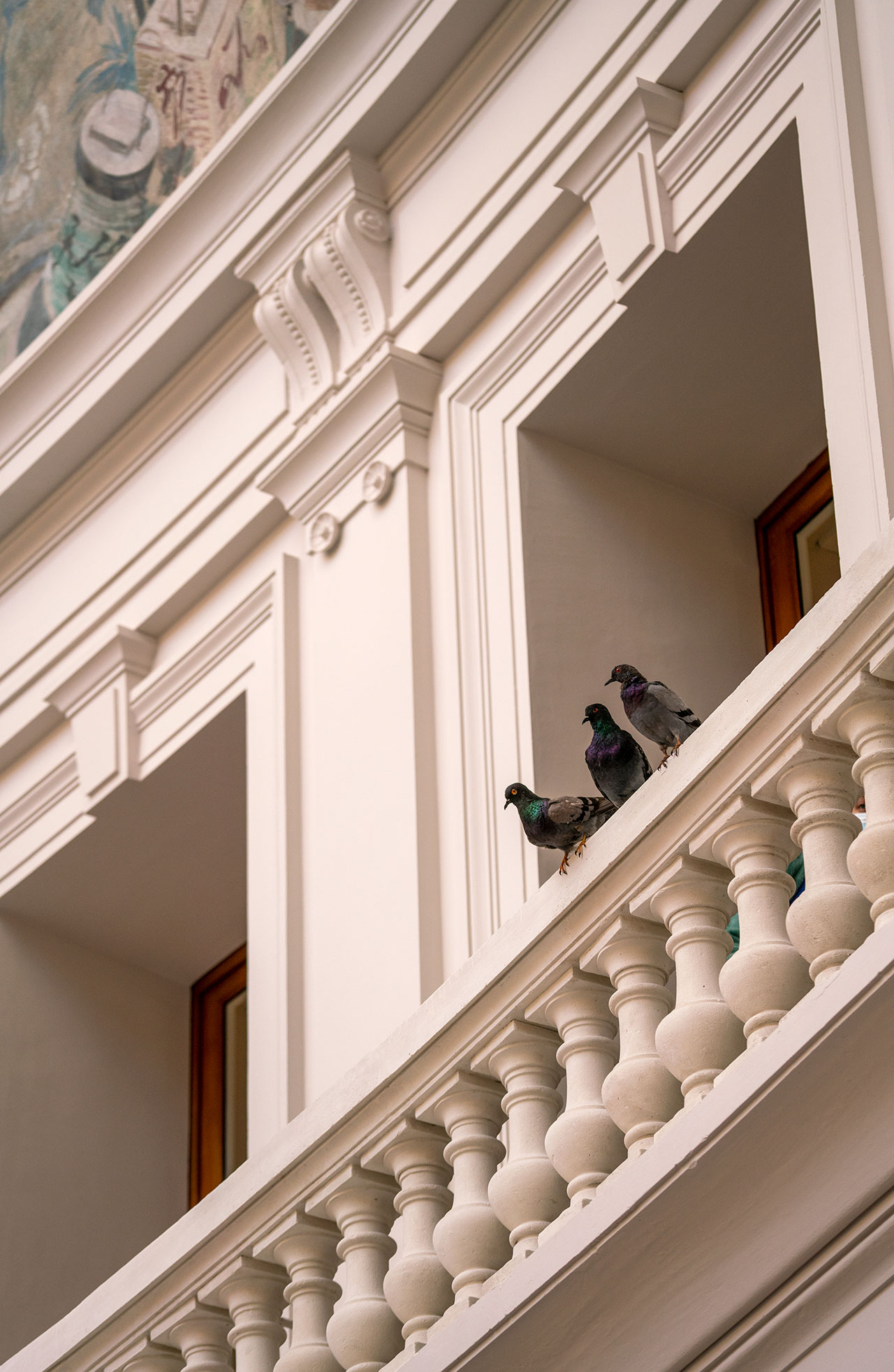
Maurizio Cattelan, Others, 2018. © Maurizio Cattelan. Exhibition views of Ouverture, Bourse de Commerce — Pinault Collection, Paris, 2021. Photo Aurélien Mole
Much less conspicuous than Fischer’s installation, but as subversive and whimsical are British artist Ryan Gander’s small white animatronic mouse that pokes out of a hole on a wall on the ground floor, Italian artist and art provocateur Maurizio Cattelan’s squadron of stuffed pigeons that ominously look down upon the visitors from the balconies of the rotunda, and Italian artist Tatiana Trouvé’s series of uncanny sculptures made of granite, marble, bronze, onyx, or steel which are modelled on different types of chairs used by museum guards.
Subversion also lies at the heart of African American artist David Hammons who is prominently featured in the exhibition with 30 works, some never seen before in Europe, which range from works on paper dating from the late 1960s and early 1970s, to sculptural installations from the 1990s, through to “Oh say can you see” (2017), a lacerated, discoloured American flag that confronts the colonial vision depicted in the section of the cupola’s mural dedicated to North America.
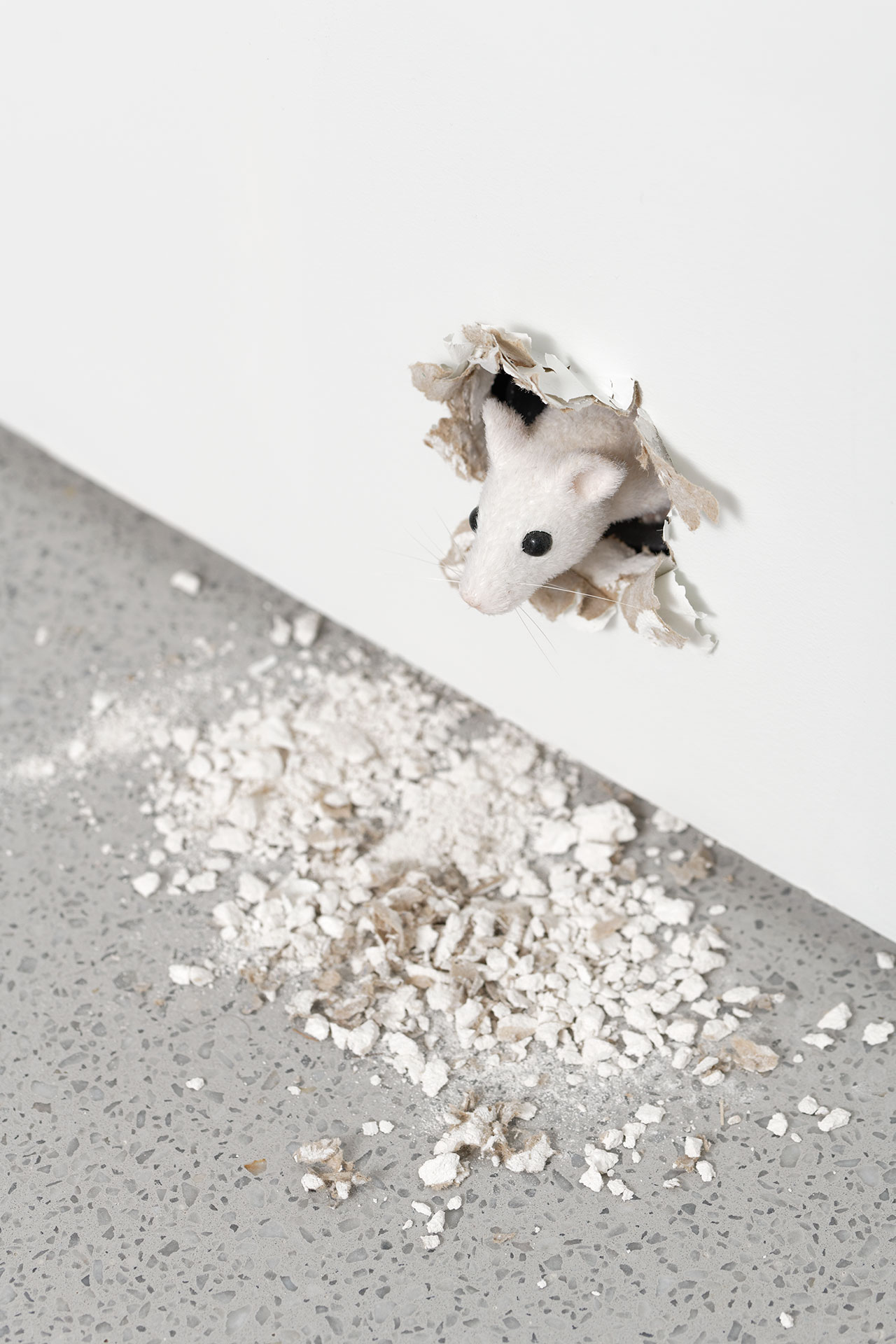
Ryan Gander, I… I… I…, 2019. © Ryan Gander / ADAGP, Paris 2021. Exhibition views of Ouverture, Bourse de Commerce — Pinault Collection, Paris, 2021. Photo Aurélien Mole
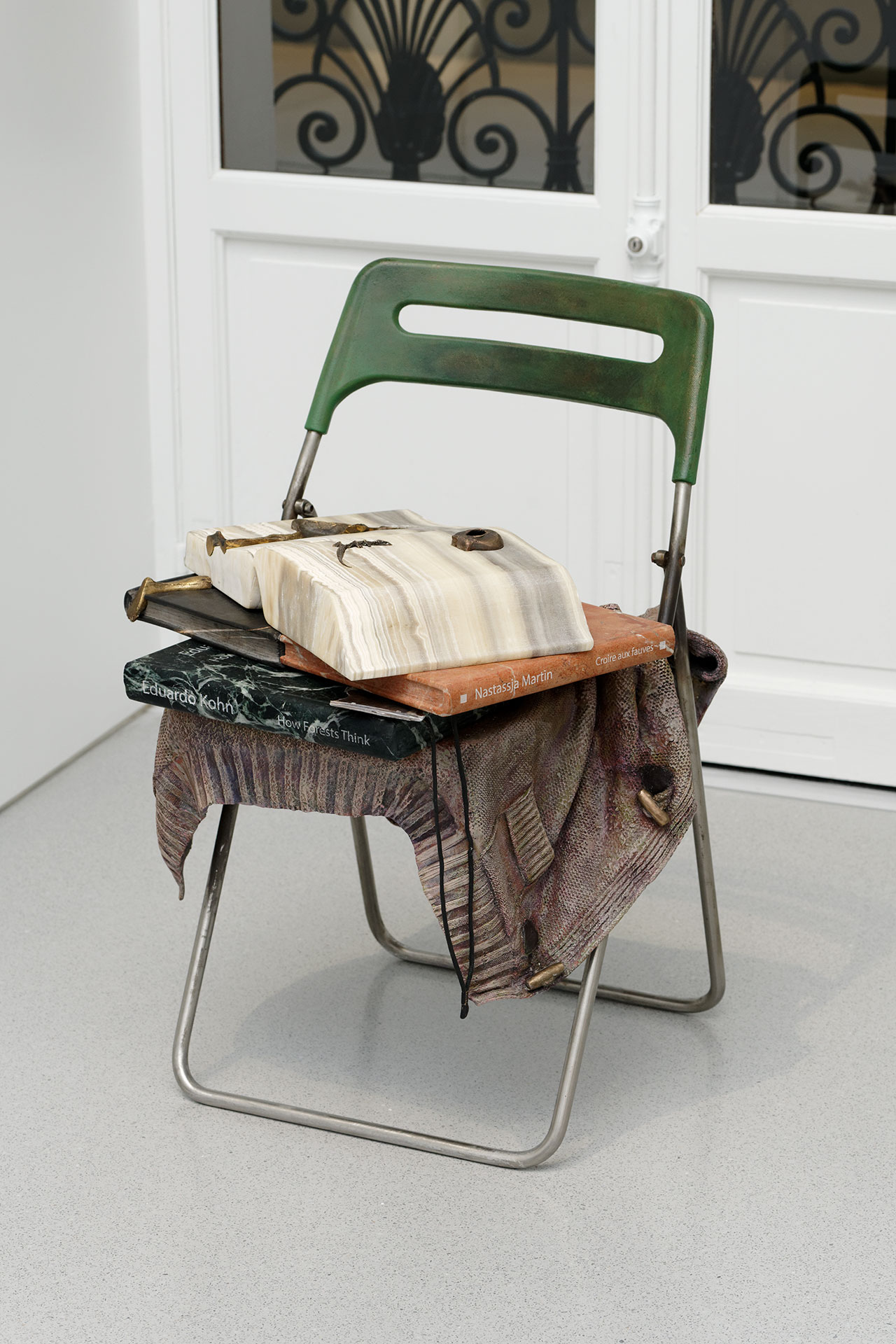
Tatiana Trouvé, The Guardian, 2020. © Tatiana Trouvé/ADAGP, Paris, 2021. Courtesy de Tatiana Trouvé et Gagosian Gallery. Exhibition views of Ouverture, Bourse de Commerce — Pinault Collection, Paris, 2021. Photo Aurélien Mole.
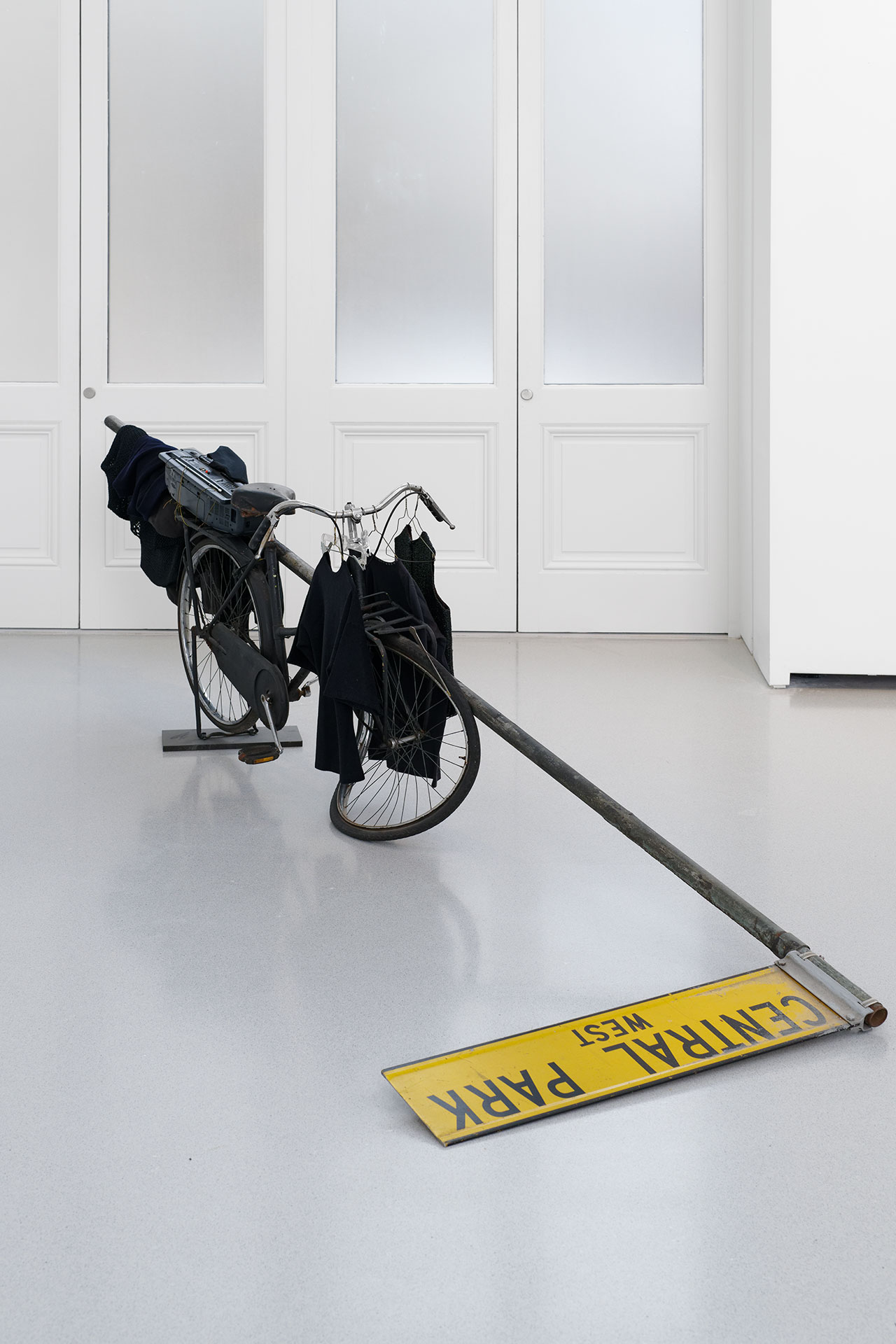
David Hammons, Central Park West,1990. © David Hammons. Exhibition views of Ouverture, Bourse de Commerce — Pinault Collection, Paris, 2021. Photo Aurélien Mole
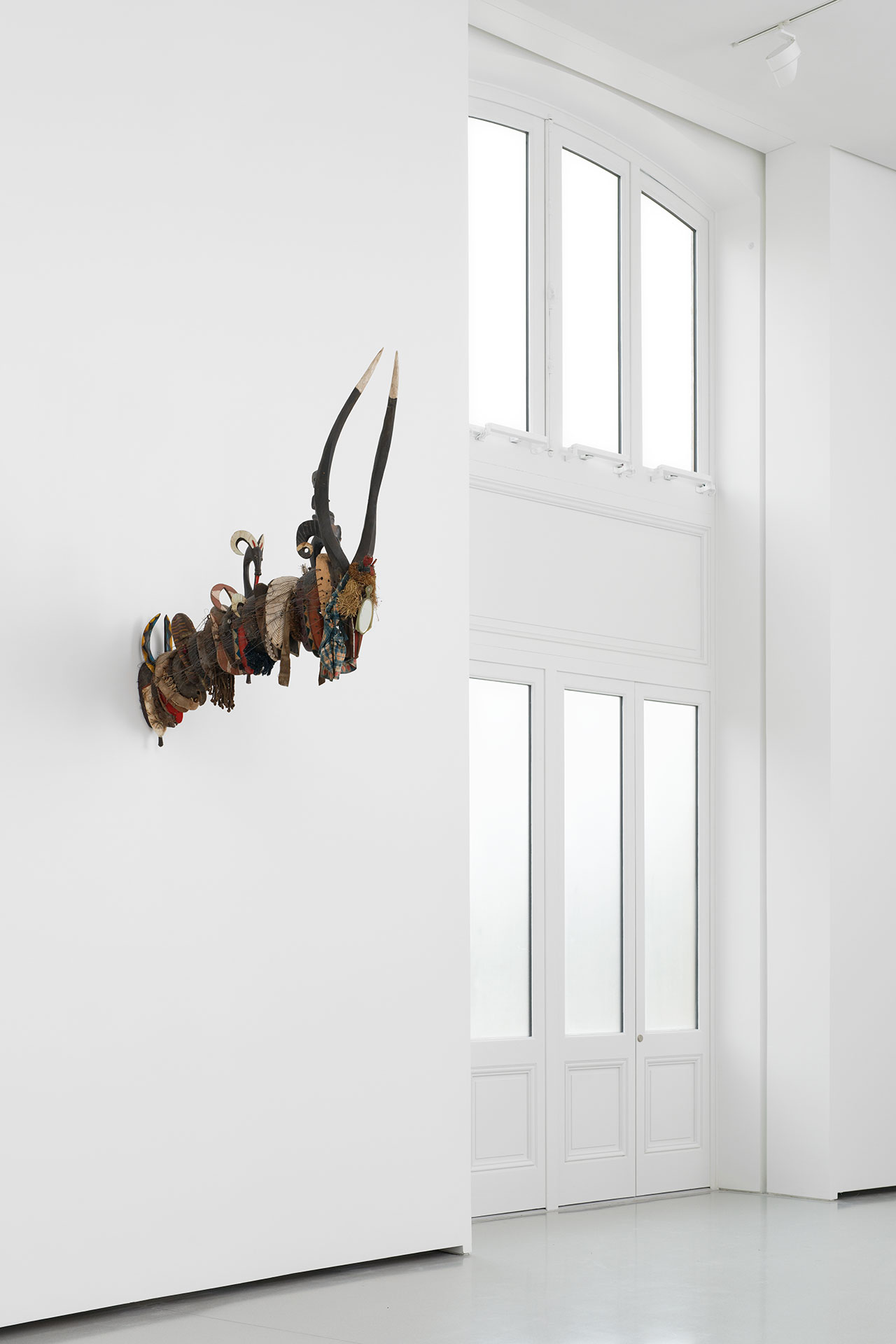
David Hammons, Cultural Fusion, 2000. © David Hammons. Exhibition views of Ouverture, Bourse de Commerce — Pinault Collection, Paris, 2021. Photo Aurélien Mole
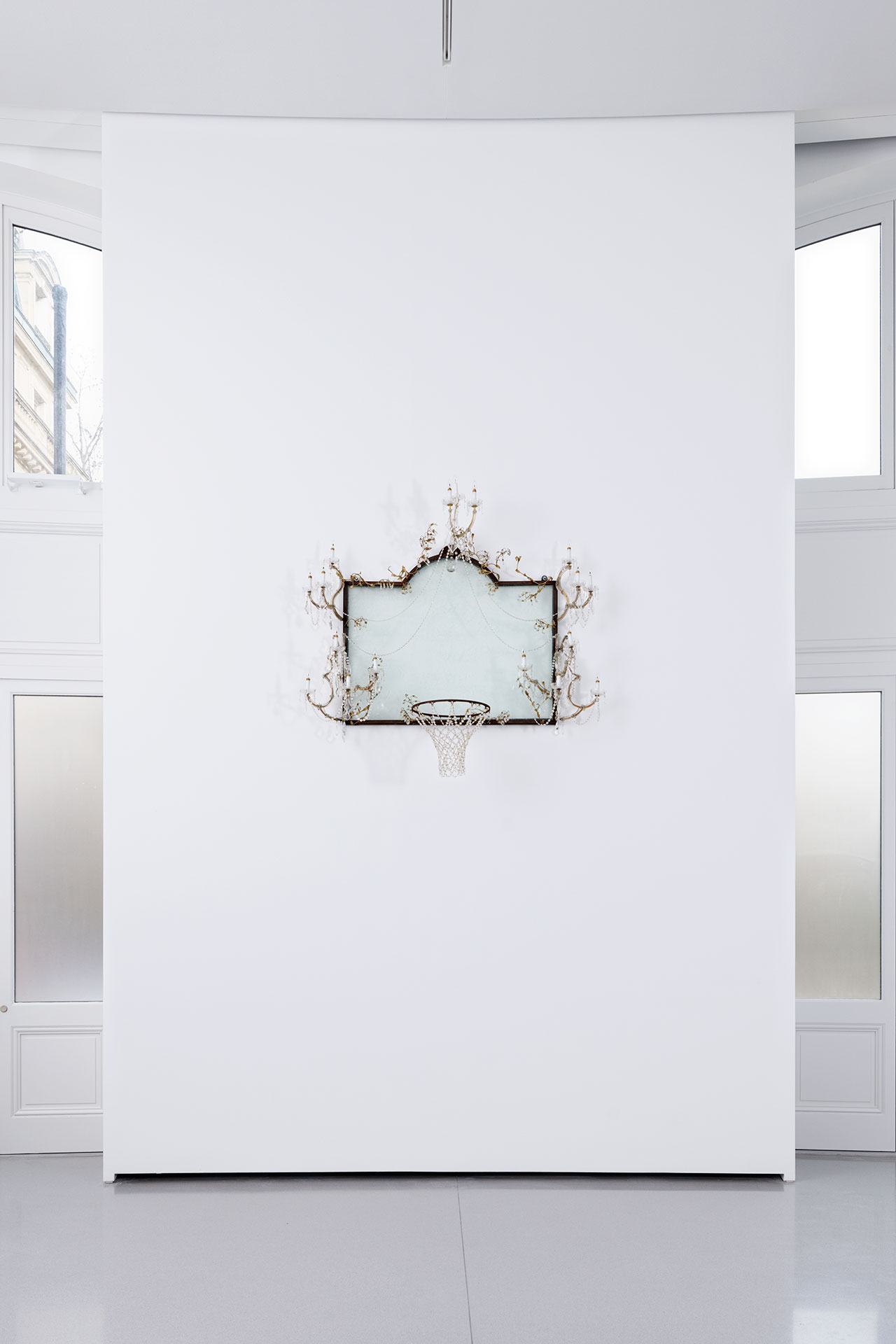
David Hammons, Untitled, 2000. © David Hammons. Exhibition views of Ouverture, Bourse de Commerce — Pinault Collection, Paris, 2021. Photo Aurélien Mole

Michel Journiac, 24 heures de la vie d'une femme ordinaire, 1974. © Michel Journiac / ADAGP, Paris 2020 Courtesy Galerie Christophe Gaillard. Exhibition views of Ouverture, Bourse de Commerce — Pinault Collection, Paris, 2021. Photo Aurélien Mole.

Sherrie Levine, After Russell Lee, 2016. © Sherrie Levine. Courtesy of the artist. Exhibition views of Ouverture, Bourse de Commerce — Pinault Collection, Paris, 2021. Photo Aurélien Mole.

Exhibition views of Ouverture, Bourse de Commerce — Pinault Collection, Paris, 2021. Photo Aurélien Mole
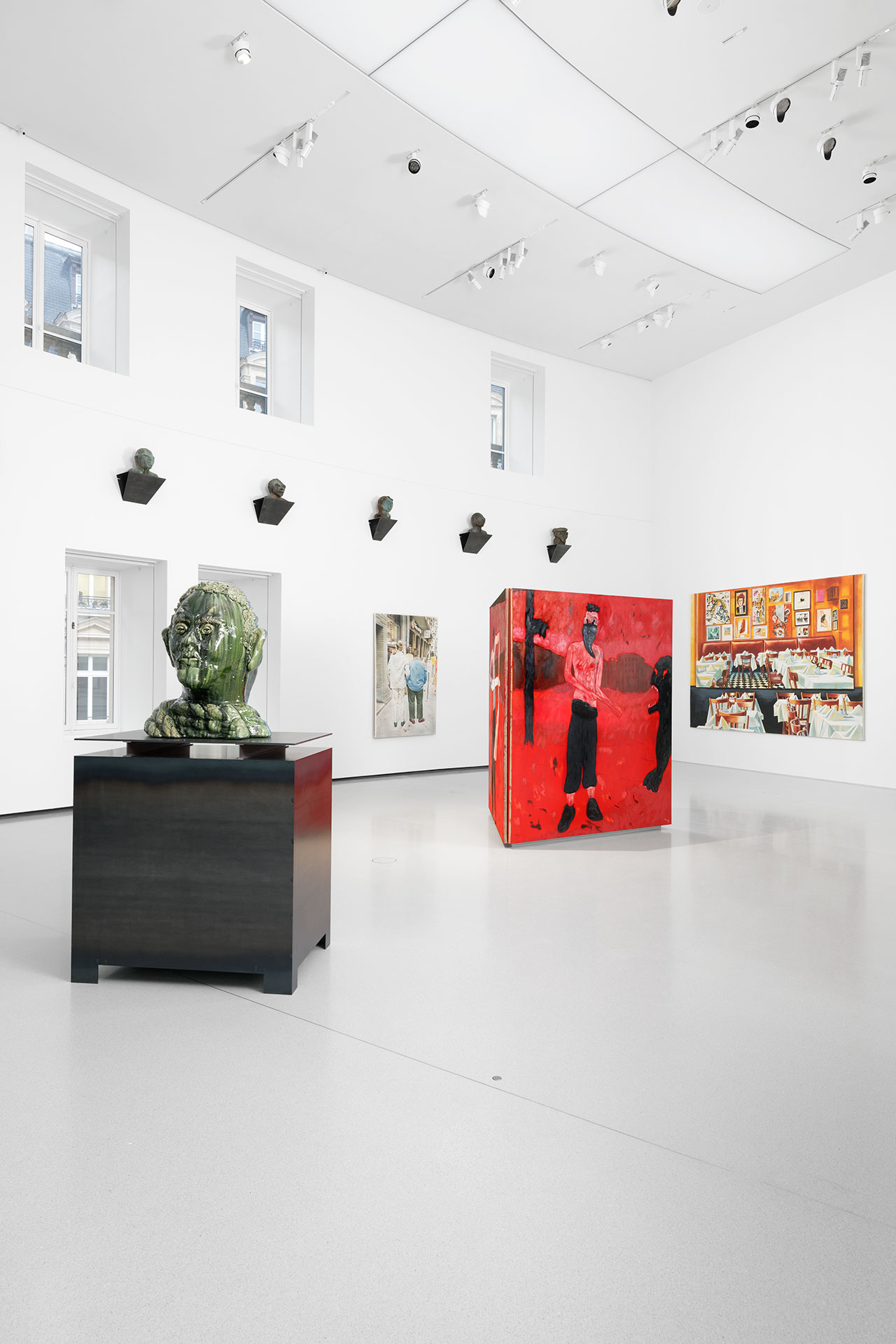
Exhibition views of Ouverture, Bourse de Commerce — Pinault Collection, Paris, 2021. Photo Aurélien Mole
Other highlights of Bourse de Commerce’s opening include work by French artist Bertrand Lavier, who was invited to take over the 24 antique display cases lining the Passage, the circular space surrounding Ando’s concrete cylinder cases – a liminal space wedged between the 19th and 21st century interiors – sees large-scale paintings by New York-based artist Rudolf Stingel, photographic works by American artists Louise Lawler, Sherrie Levine, and Cindy Sherman, and French performance artist Michel Journiac’s “24 heures de la vie d’une femme ordinaire” (1974) which documents spending a whole day dressed as a woman carrying out her daily tasks.
More than any particular work of art or artist though, what makes the Bourse de Commerce such an exciting proposition is the conversations it initiates between art and architecture, history and modernity, and cultural heritage and artistic expression. In conjunction with Ando’s light-footed yet striking architectural statement, suffice it to say that Pinault’s new museum is sure to jumpstart Paris’ post-pandemic cultural life with aplomb.

Bertrand Lavier, Teddy B, 2020. © Bertrand Lavier / ADAGP, Paris 2021. Exhibition views of Ouverture, Bourse de Commerce — Pinault Collection, Paris, 2021. Photo Aurélien Mole.
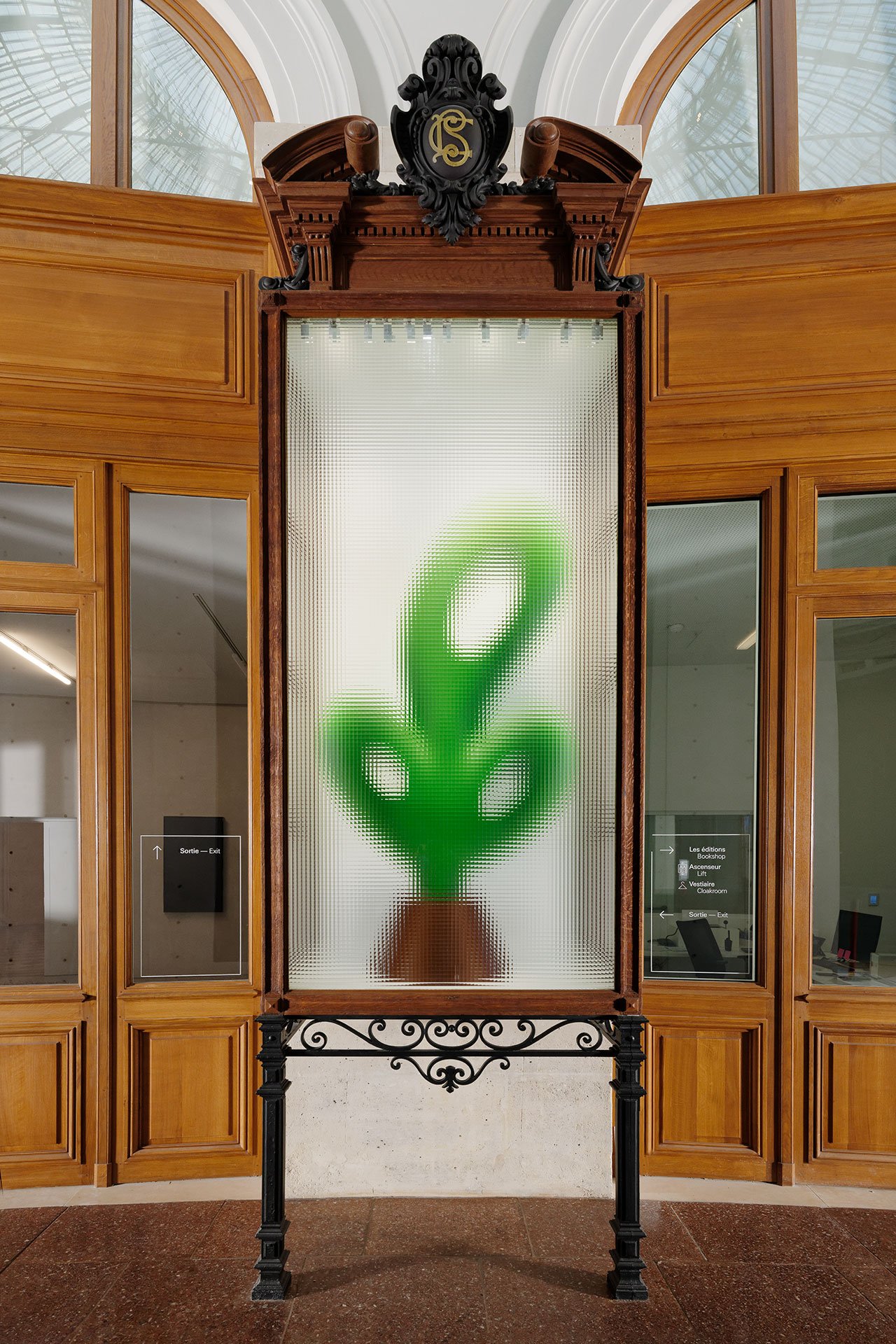
Bertrand Lavier, Walt Disney Productions 1947–2018 n°6, 2018. © Bertrand Lavier / ADAGP, Paris 2021. Exhibition views of Ouverture, Bourse de Commerce — Pinault Collection, Paris, 2021. Photo Aurélien Mole.
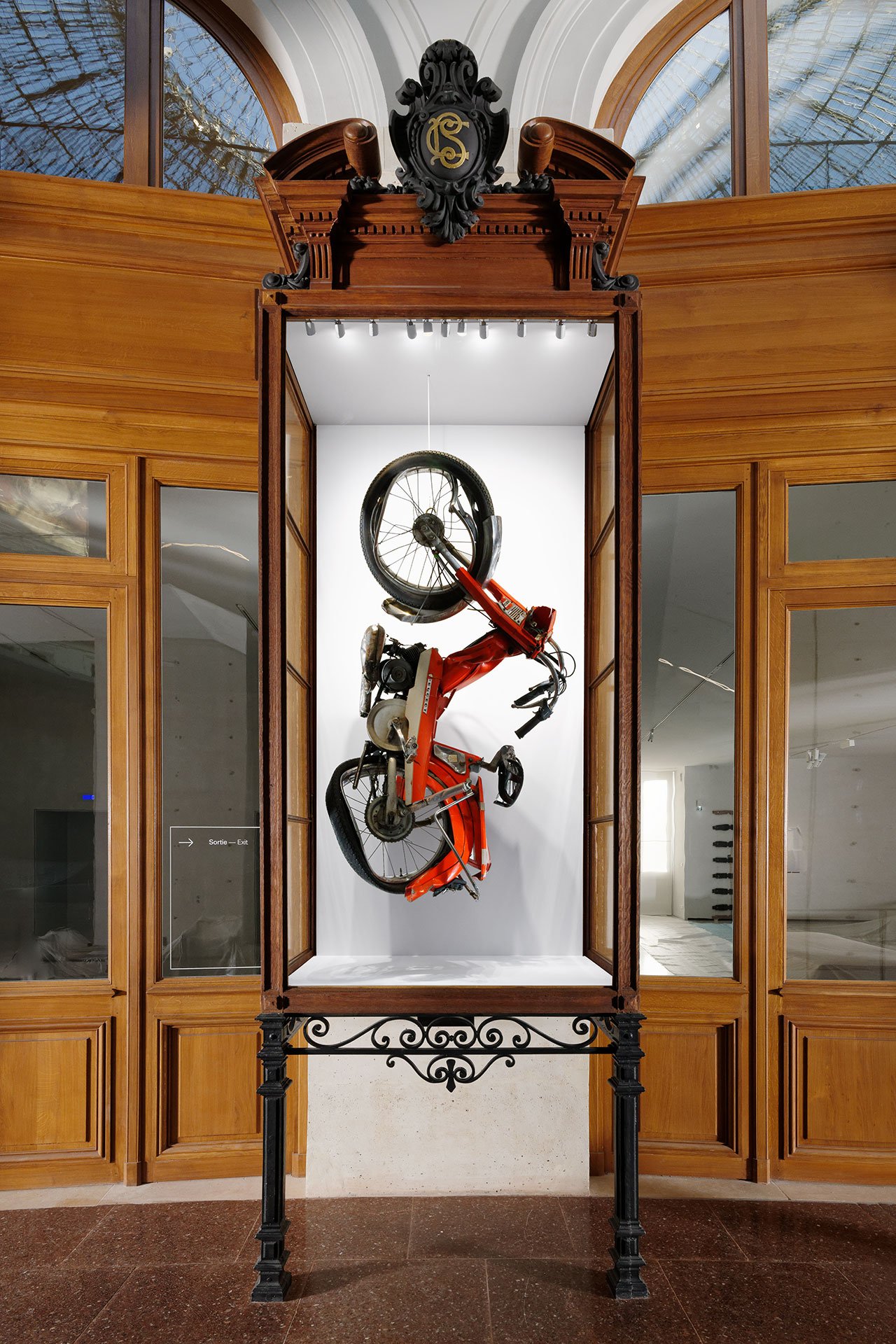
Bertrand Lavier, Peugeot 103, 1993. © Bertrand Lavier / ADAGP, Paris 2021. Exhibition views of Ouverture, Bourse de Commerce — Pinault Collection, Paris, 2021. Photo Aurélien Mole.
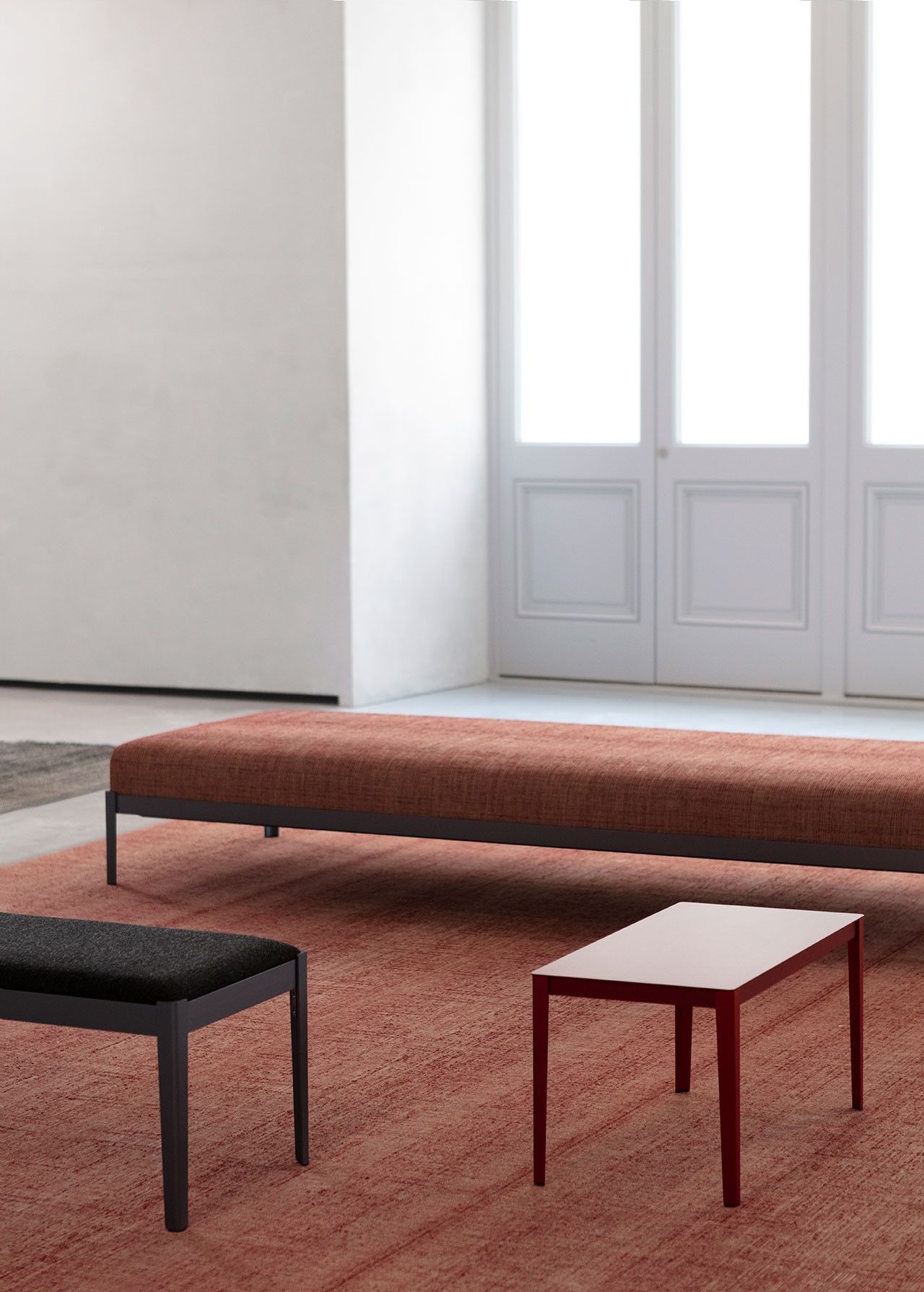
Ronan et Erwan Bouroullec, Interior furnishings for the Salon, carpets and benches, 2020. © Studio Bouroullec. © Tadao Ando Architect & Associates, NeM / Niney et Marca
Courtesy Bourse de Commerce - Pinault Collection

Ronan et Erwan Bouroullec, chandelier, 2020. © Studio Bouroullec © Tadao Ando Architect & Associates, NeM / Niney et Marca
Courtesy Bourse de Commerce - Pinault Collection

Bras - La Halle aux grains. Restaurant-Café at the 3rd floor of Bourse de Commerce. Photo Laurent Dupont







